Estimating the Total Volume of Running Water Bodies Using Geographic Information System (GIS): A Case Study of Peshawar Basin (Pakistan)
Abstract
1. Introduction
2. Materials and Methods
2.1. Study Area
2.1.1. Tectonic Setting of Peshawar Basin
2.1.2. Geology of Peshawar Basin
2.1.3. Stratigraphy of the Study Area
Landikotal Formation
Shagai Formation
Ali Masjid Formation
Khyber Limestone
2.2. Data and Software
- Estimated the recharge of the study area.
- Calculated the LULC of the Peshawar basin.
- Calculated the total runoff water volume in the Peshawar basin.
2.2.1. Methodology for Calculating the Volume of Running Water Body
2.2.2. Applying Cuts
- 10% cut leaves 1.609 km3 of running water.
- 20% cut leaves 0.804 km3 of running water.
- 30% cut leaves 0.536 km3 of running water.
- 40% cut leaves 0.402 km3 of running water.
3. Results and Discussion
3.1. Volume Estimation of Peshawar Basin
3.2. Map of Peshawar Basin
3.3. Total Area of Peshawar Basin
3.4. Map of Charsadda District
3.5. Map of Peshawar District
3.6. Map of Mardan District
3.7. Map of the Swabi District
3.8. Map of the Nowshera District
4. Discussion
5. Conclusions
Author Contributions
Funding
Institutional Review Board Statement
Informed Consent Statement
Data Availability Statement
Acknowledgments
Conflicts of Interest
References
- Jessani, S.; Levey, A.S.; Bux, R.; Inker, L.A.; Islam, M.; Chaturvedi, N.; Mariat, C.; Schmid, C.H.; Jafar, T.H. Estimation of GFR in South Asians: A Study from the General Population in Pakistan. Am. J. Kidney Dis. 2014, 63, 49–58. [Google Scholar] [CrossRef] [PubMed]
- World Population Review. Available online: https://worldpopulationreview.com/countries/pakistan-population (accessed on 4 September 2021).
- Rehman, A.; Jingdong, L.; Shahzad, B.; Chandio, A.A.; Hussain, I.; Nabi, G.; Iqbal, M.S. Economic perspectives of major field crops of Pakistan: An empirical study. Pac. Sci. Rev. B Humanit. Soc. Sci. 2015, 1, 145–158. [Google Scholar] [CrossRef]
- Rehman, A.; Jingdong, L.; Du, Y.; Khatoon, R.; Wagan, S.A.; Nisar, S.K. Flood Disaster in Pakistan and its Impact on Agriculture Growth (A Review). J. Econ. Sustain. Dev. 2015, 6, 39–42. [Google Scholar]
- Khan, N.; Shah, S.J.; Rauf, T.; Zada, M.; Yukun, C.; Harbi, J. Zada Socioeconomic Impacts of the Billion Trees Afforestation Program in Khyber Pakhtunkhwa Province (KPK), Pakistan. Forests 2019, 10, 703. [Google Scholar] [CrossRef]
- Regüés, D.; Badía, D.; Echeverría, M.; Gispert, M.; Lana-Renault, N.; León, J.; Nadal, M.; Pardini, G.; Serrano-Muela, P.; Muñoz, D.R. Analysing the effect of land use and vegetation cover on soil infiltration in three contrasting environments in northeast Spain. Geogr. Res. Lett. 2017, 43, 141–169. [Google Scholar] [CrossRef]
- Mustafa, A.; Mustafa, U.; Khalid, M. Rooftop Rain Water Harvesting Technology and Women Time Allocation in District Bagh and Battagram Pakistan. Pak. Dev. Rev. 2011, 50, 459–470. [Google Scholar] [CrossRef]
- Iqbal, M.S.; Dahri, Z.H.; Querner, E.P.; Khan, A.; Hofstra, N. Impact of Climate Change on Flood Frequency and Intensity in the Kabul River Basin. Geosciences 2018, 8, 114. [Google Scholar] [CrossRef]
- Zhao, G.X.; Lin, G.; Warner, T. Using Thematic Mapper data for change detection and sustainable use of cultivated land: A case study in the Yellow River delta, China. Int. J. Remote Sens. 2004, 25, 2509–2522. [Google Scholar] [CrossRef]
- Dwivedi, R.; Sreenivas, S.K.; Ramana, K.V. Land-use/land-cover change analysis in part of Ethiopia using Landsat Thematic Mapper data. Int. J. Remote Sens. 2005, 26, 1285–1287. [Google Scholar] [CrossRef]
- Erle, E.; Pontius, R. Land-use and land-cover change. In Encyclopaedia of Earth Environmental Information; Cleveland, C.J., Ed.; Coalition: Washington, DC, USA, 2007. [Google Scholar]
- Fan, F.; Weng, Q.; Wang, Y. Land use land cover change in Guangzhou, China, from 1998 to 2003, based on Landsat TM/ETM+ imagery. Sensors 2007, 7, 1323–1342. [Google Scholar] [CrossRef]
- Lu, D.; Weng, Q. A survey of image classification methods and techniques for improving classification performance. Int. J. Remote Sens. 2007, 28, 823–870. [Google Scholar] [CrossRef]
- Yuan, D.; Elvidge, C.D.; Lunetta, R.S. Survey of multi-spectral methods for land cover change analysis. In Remote Sensing Change Detection: Environmental Monitoring Methods and Applications; Lunetta, R.S., Elvidge, C.D., Eds.; Taylor & Francis: London, UK, 1999; pp. 21–39. [Google Scholar]
- Attri, P.; Chaudhry, S.; Sharma, S. Remote sensing & GIS based approaches for LULC change detection–A review. Int. J. Curr. Eng. Technol. 2015, 5, 3126–3137. [Google Scholar]
- Chen, X.; Vierling, L.; Deering, D. A simple and effective radiometric correction method to improve landscape change detection across sensors and across time. Remote Sens. Environ. 2005, 98, 63–79. [Google Scholar] [CrossRef]
- Gao, J.; Liu, Y. Determination of land degradation causes in Tongyu County, Northeast China via land cover change detection. Int. J. Appl. Earth Obs. Geoinf. 2010, 12, 9–16. [Google Scholar] [CrossRef]
- Lu, D.; Mausel, P.; Brondizio, E.; Moran, E. Change detection techniques. Int. J. Remote Sens. 2004, 25, 2365–2407. [Google Scholar] [CrossRef]
- Ali, N. Groundwater Assessment of the Peshawar District and Its Potential for Future Demand; College of Science and Engineering, Flinders University: Adelaide, Australia, 2018. [Google Scholar]
- Geological Map of North-West Frontier Province Pakistan 2006, Geological Survey of Pakistan. Available online: https://gsp.gov.pk/ (accessed on 13 March 2022).
- Farid, A.; Jadoon, K.; Akhter, G.; Iqbal, M.A. Hydrostratigraphy and hydrogeology of the western part of Maira area, Khyber Pakhtunkhwa, Pakistan: A case study by using electrical resistivity. Environ. Monit. Assess. 2013, 185, 2407–2422. [Google Scholar] [CrossRef]
- Khan, G.D.; Ali, M.; Akbar, F. Over exploitation of groundwater resources and their influence on groundwater in Peshawar Valley. Civ. Environ. Res. 2014, 6, 85–90. [Google Scholar]
- Malik, M.S. Records of groundwater levels of Peshawar Vale, West Pakistan. WASID/WAPDA 1967, 12, 18–40. [Google Scholar]
- Padmavathy, A.; Raj, K.G.; Yogarajan, N.; Thangavel, P.; Chandrasekhar, M. Checkdam site selection using GIS approach. Adv. Space Res. 1993, 13, 123–127. [Google Scholar] [CrossRef]
- El-Awar, F.A.; Makke, M.; Zurayk, R.A.; Mohtar, R.H. A hydro-spatial hierarchical methodology for siting water har-vesting reservoirs in dry areas. In Proceedings of the 2000 ASAE Annual International Meeting, Milwaukee, WI, USA, 9–12 July 2000; pp. 1–33. [Google Scholar]
- Shankar, M.R.; Mohan, G. A GIS based hydrogeomorphic approach for identification of site-specific ar-tifi-cial-recharge techniques in the Deccan Volcanic Province. J. Earth Syst. Sci. 2005, 114, 505–514. [Google Scholar] [CrossRef]
- De Winnaar, G.; Jewitt, G.; Horan, M. A GIS-based approach for identifying potential runoff harvesting sites in the Thukela River basin, South Africa. Phys. Chem. Earth Parts A/B/C 2007, 32, 1058–1067. [Google Scholar] [CrossRef]
- Ammar, A.; Riksen, M.; Ouessar, M.; Ritsema, C. Identification of suitable sites for rainwater harvesting structures in arid and semi-arid regions: A review. Int. Soil Water Conserv. Res. 2016, 4, 108–120. [Google Scholar] [CrossRef]
- Bakir, M.; Xingnan, Z. GIS and Remote Sensing applications for rainwater harvesting in the Syrian Desert (Al-Badia). In Proceedings of the Twelfth International Water Technology Conference, IWTC12 2008, Alexandria, Egypt, 1 January 2008. [Google Scholar]
- Rammal, M.; Berthier, E. Runoff Losses on Urban Surfaces during Frequent Rainfall Events: A Review of Observations and Modeling Attempts. Water 2020, 12, 2777. [Google Scholar] [CrossRef]
- Hari, D.; Reddy, K.R.; Vikas, K.; Srinivas, N.; Vikas, G. Assessment of rainwater harvesting potential using GIS. In Proceedings of the IOP Conference Series: Materials Science and Engineering, Hyderabad, India, 1–2 June 2017; Volume 330, pp. 1–9. [Google Scholar]
- Balasubramanian, A. Digital Elevation Model (DEM) in GIS; University of Mysore: Karnataka, India, 2017. [Google Scholar]
- Abdulwahd, A.K.; Liejy, M.C.; Sulaiman, M.A.; Al-Ansari, N. Water Runoff Estimation Using Geographical Information System (GIS) for Alrakhmah Basin Valley Northeast of Iraq. Engineering 2020, 12, 315–324. [Google Scholar] [CrossRef]
- Alcaras, E.; Amoroso, P.P.; Parente, C.; Prezioso, G. Remotely sensed image fast classification and smart thematic map production. ISPRS Int. Arch. Photogramm. Remote Sens. Spat. Inf. Sci. 2021, 46, 43–50. [Google Scholar] [CrossRef]
- Amano, H.; Iwasaki, Y. Estimation of groundwater recharge in Kumamoto area, Japan in 2016 by mapping land cover using GIS data and SPOT 6/7 satellite images. Sustainability 2022, 14, 545. [Google Scholar] [CrossRef]
- Odekunle, T.O.; Orinmoogunje, I.O.O.; Ayanlade, A. Application of GIS to assess rainfall variability impacts on crop yield in Guinean Savanna part of Nigeria. Afr. J. Biotechnol. 2007, 6, 2100–2113. [Google Scholar] [CrossRef][Green Version]
- Bandi, A.S.; Meshapam, S.; Deva, P. A geospatial approach to flash flood hazard mapping in the city of Warangal, Telangana, India. Environ. Socio-Econ. Stud. 2019, 7, 1–13. [Google Scholar] [CrossRef]
- Schumann, A.; Funke, R.; Schultz, G. Application of a geographic information system for conceptual rainfall–runoff modeling. J. Hydrol. 2000, 240, 45–61. [Google Scholar] [CrossRef]
- Dewan, A.M.; Islam, M.M.; Kumamoto, T.; Nishigaki, M. Evaluating flood hazard for land-use planning in greater Dhaka of Bangladesh using remote sensing and GIS techniques. Water Resour. Manag. 2007, 21, 1601–1612. [Google Scholar] [CrossRef]
- Liu, Y.; Gebremeskel, S.; De Smedt, F.; Hoffmann, L.; Pfister, L. A diffusive transport approach for flow routing in GIS-based flood modeling. J. Hydrol. 2003, 283, 91–106. [Google Scholar] [CrossRef]
- Kumar, A.; Kanga, S.; Taloor, A.K.; Singh, S.K.; Đurin, B. Surface runoff estimation of Sind river basin using integrated SCS-CN and GIS techniques. HydroResearch 2021, 4, 61–74. [Google Scholar] [CrossRef]
- Garba, M.D.; Muhammad, U.; Khan, S.; Farrukh, K.; Ahmad, S.; Muhamad, G.; Akram, F.E.; Muhammad, H. CO2 towards fuels: A review of catalytic conversion of carbon dioxide to hydrocarbons. J. Environ. Chem. Eng. 2021, 9, 104756. [Google Scholar] [CrossRef]
- Khan, S.; Khulief, Y.A.; and Al-Shuhail, A.A. Effects of reservoir size and boundary conditions on pore-pressure buildup and fault reactivation during CO2 injection in deep geological reservoirs. Environ. Earth Sci. 2020, 79, 1–23. [Google Scholar] [CrossRef]
- Israf, U.D.; Usman, M.; Khan, S.; Aasif, H.; Alotaibi, M.A.; Alharthi, A.I.; Centi, G. Prospects for a green methanol thermo-catalytic process from CO2 by using MOFs based materials: A mini-review. J. CO2 Util. 2021, 43, 101361. [Google Scholar] [CrossRef]
- Khan, S.; Khulief, Y.A.; and Al-Shuhail, A.A. The geomechanical and fault activation modeling during CO2 injection into deep Minjur reservoir, eastern Saudi Arabia. Sustainability 2020, 12, 9800. [Google Scholar] [CrossRef]
- Hussain, A.; Dipietro, J.A.; Pogue, K.R. Stratigraphy and structure of the Peshawar basin, Pakistan. J. Nepal Geol. Soc. 1998, 18, 25–35. [Google Scholar] [CrossRef]
- Pogue, K.R.; Wardlaw, B.R.; Harris, A.G.; Hussain, A. Paleozoic and Mesozoic stratigraphy of the Peshawar basin, Pakistan: Correlations and implications. Geol. Soc. Am. Bull. 1992, 104, 915–927. [Google Scholar] [CrossRef]
- Hussain, A.; Pogue, K.E.V.I.N.; Khan, S.R.; Ahmad, I.M.T.I.A.Z. Paleozoic stratigraphy of the Peshawar basin, Pakistan. Geol. Bull. Univ. Peshawar 1991, 24, 85–97. [Google Scholar]
- Hussain, A.; Yeats, R.S.; Pogue, K. Stratigraphy and structural events around the southern margin of Peshawar basin, Pakistan. Geol. Bull. Univ. Peshawar 1989, 22, 45–54. [Google Scholar]
- Magsi, H.Z. Seismogeodynamics of the Hazara-Kashmir transverse trough, Pakistan. New Concepts Glob. Tecton. J. 2015, 3, 477–490. [Google Scholar]
- Taraky, Y.; Liu, Y.; McBean, E.; Daggupati, P.; Gharabaghi, B. Flood Risk Management with Transboundary Conflict and Cooperation Dynamics in the Kabul River Basin. Water 2021, 13, 1513. [Google Scholar] [CrossRef]
- Al-Shuhail, A.A.; Alshuhail, A.A.; Khulief, Y.A.; Salam, S.A.; Chan, S.A.; Ashadi, A.L.; Al-Lehyani, A.F.; Almubarak, A.M.; Khan, M.Z.U.; Abdulrahman, K.A.; et al. KFUPM Ghawar digital viscoelastic seismic model. Arab. J. Geosci. 2019, 12, 245. [Google Scholar] [CrossRef]
- Ahmad, N.; Khan, S.; Al-Shuhail, A. Seismic data interpretation and petrophysical analysis of Kabirwala area Tola (01) well, Central Indus Basin, Pakistan. Appl. Sci. 2021, 11, 2911. [Google Scholar] [CrossRef]
- Khan, A.M.; Al-Juhani, S.G.; Abdul, S.Y.E.D. Digital viscoelastic seismic models and data sets of central Saudi Arabia in the presence of near-surface karst features. J. Seism. Explor. 2020, 29, 15–28. [Google Scholar]
- Chan, S.A.; Edigbue, P.; Khan, S.; Ashadi, A.L.; Al-Shuhail, A.A. Viscoelastic model and synthetic seismic data of eastern Rub’Al-Khali. Appl. Sci. 2021, 11, 1401. [Google Scholar] [CrossRef]
- Shah, M.M.; Afridi, S.; Khan, E.U.; Rahim, H.U.; Mustafa, M.R. Diagenetic Modifications and Reservoir Heterogeneity Associated with Magmatic Intrusions in the Devonian Khyber Limestone, Peshawar Basin, NW Pakistan. Geofluids 2021, 2021, 1–18. [Google Scholar] [CrossRef]
- Hasany, S.T.; Khan, F. Paleozoic Sequences as Potential Source Rocks for Petroleum in Northwestern Pakistan, with Particular Reference to the Silurian System, a Major Petroleum Source in the Middle East and North Africa. Available online: https://www.searchanddiscovery.com/pdfz/documents/2012/30263hasany/ndx_hasany.pdf.html (accessed on 16 March 2022).
- Ashraf, M.; Khattak, W.; Khan, M.A. Bara thrust zone, southern khyber agency, northern pakistan: Insight for the tec-tonic boundary between the attock-cherat-khyber and the kalachitta-samana hill ranges. J. Himal. Earth Sci. 2012, 45, 28–29. [Google Scholar]
- Hylland, M.D.; Robert, S.Y. Stratigraphic and structural framework of Himalayan foothills. In Himalaya and Tibet: Mountain Roots to Mountain Tops; The Geological Society of America: Boulder, CO, USA, 1999; Volume 328, p. 257. [Google Scholar]
- Anjum, M.N.; Ali, N.; Rehman, Z.U.; Ghayas, M.; Ahmad, W. Rock aggregate potential of limestone units in the Khyber Formation, Pakistan. Int. J. Econ. Environ. Geol. 2018, 9, 26–33. [Google Scholar]
- Regional Meteorological Center (RMC) Peshawar. Available online: http://www.pmd.gov.pk/rmc/KP-about.html (accessed on 5 February 2022).
- ArcGIS Desktop 10.7.x System Requirements—System Requirements|Documentation. Available online: https://desktop.arcgis.com/en/system-requirements/10.7/arcgis-desktop-system-requirements.htm (accessed on 5 February 2022).
- Hütt, C.; Koppe, W.; Miao, Y.; Bareth, G. Best Accuracy Land Use/Land Cover (LULC) Classification to Derive Crop Types Using Multitemporal, Multisensor, and Multi-Polarization SAR Satellite Images. Remote Sens. 2016, 8, 684. [Google Scholar] [CrossRef]
- United States Geological Survey. Available online: https://www.usgs.gov/ (accessed on 5 February 2022).
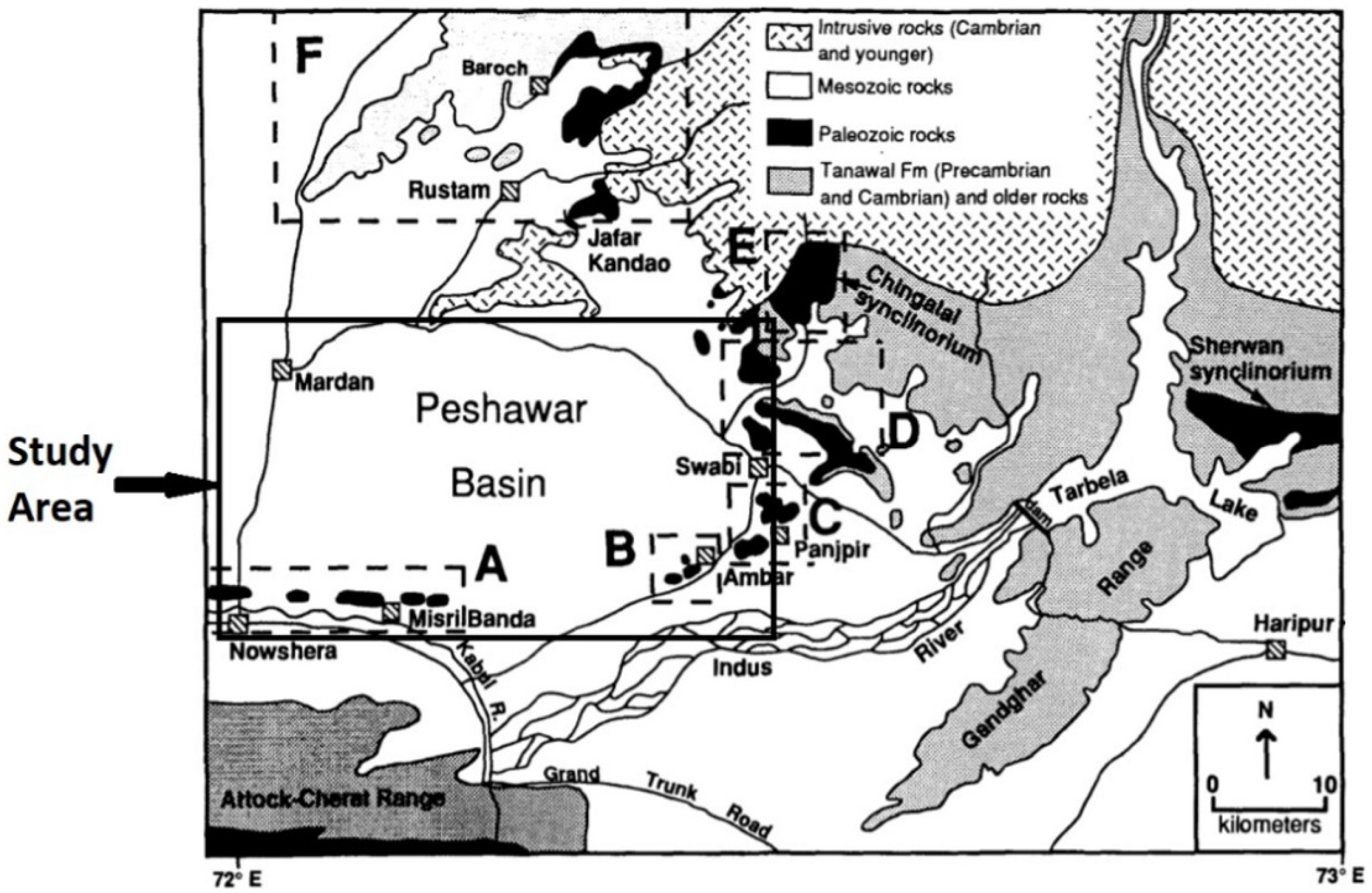
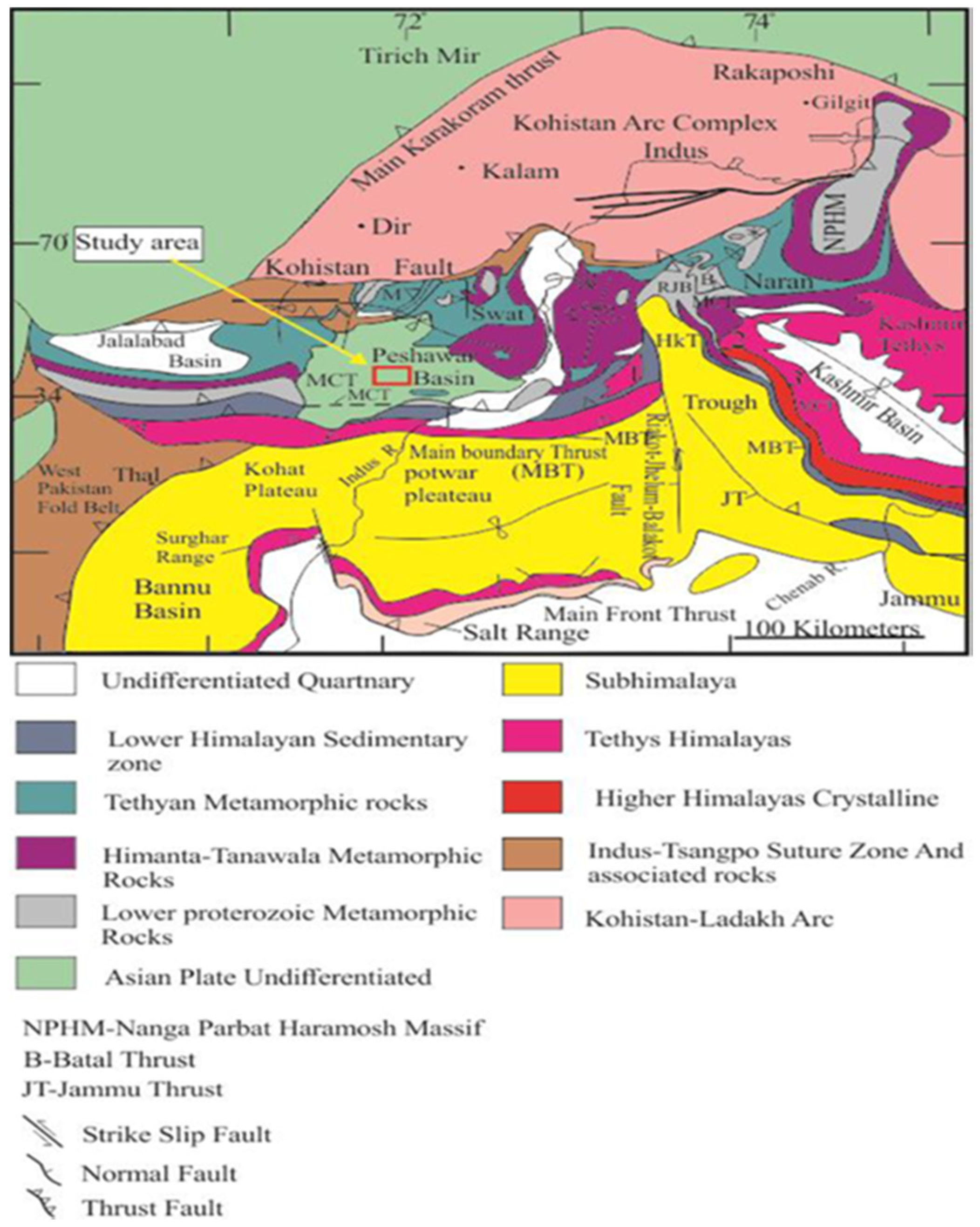
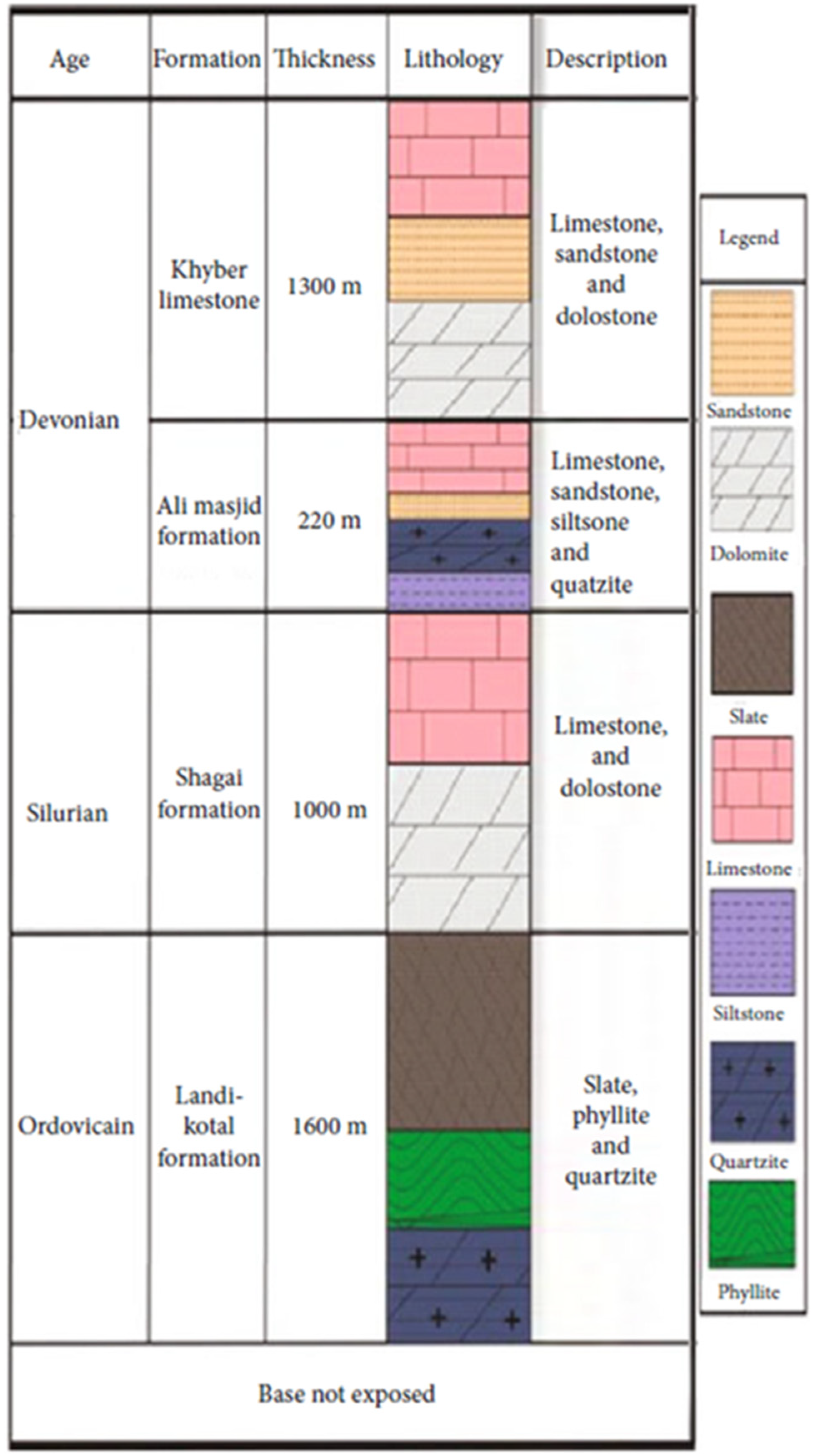
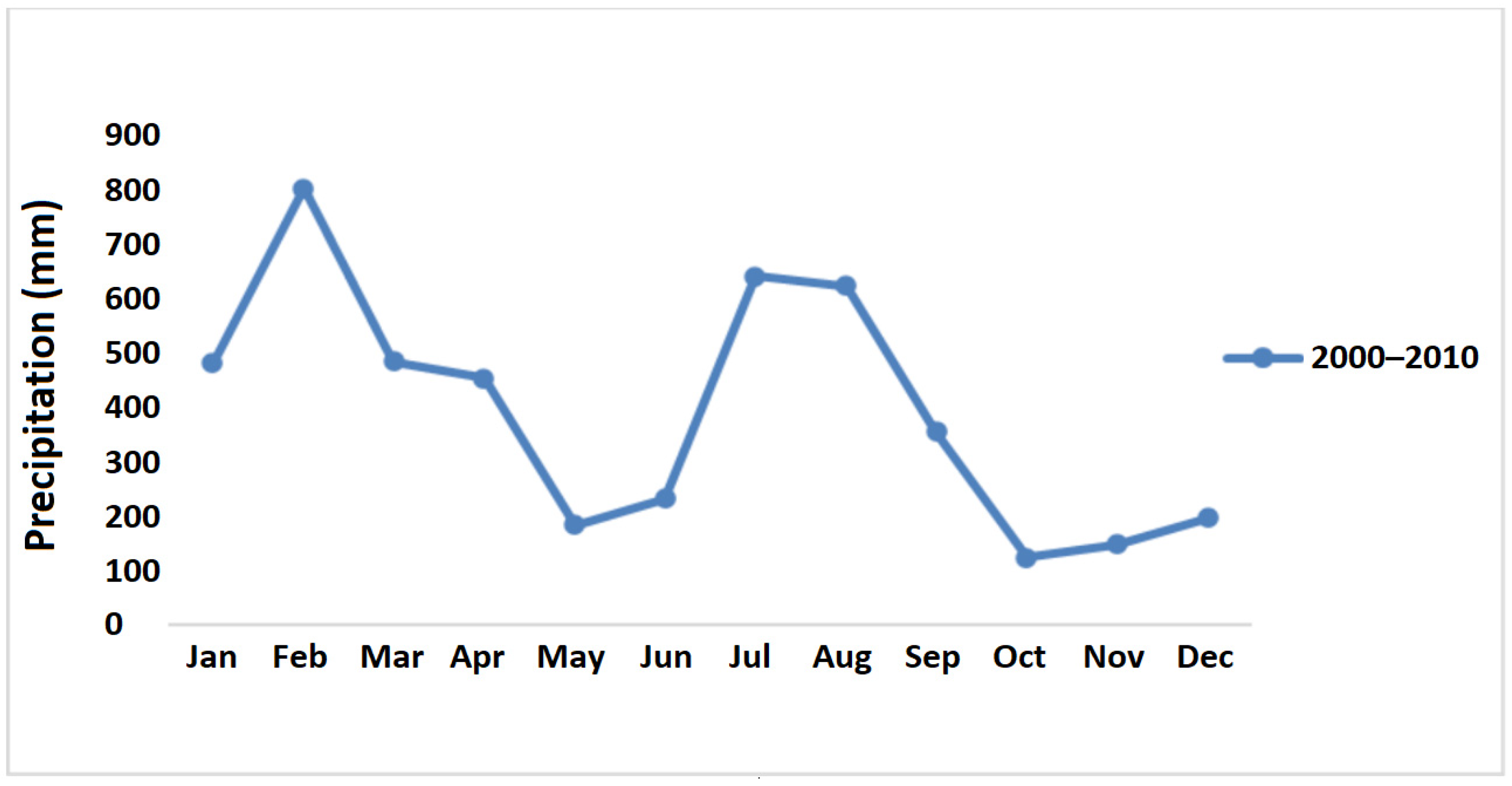
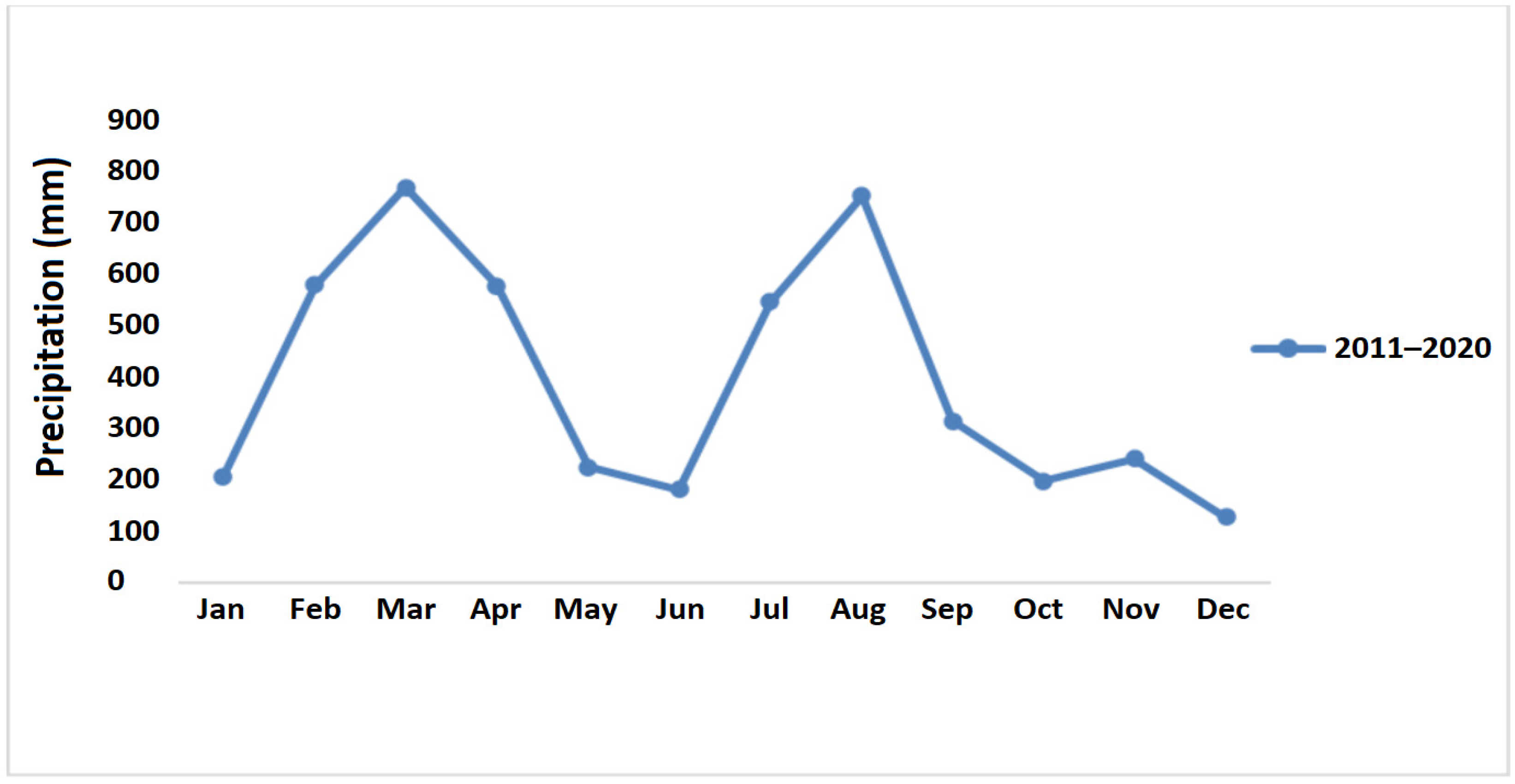
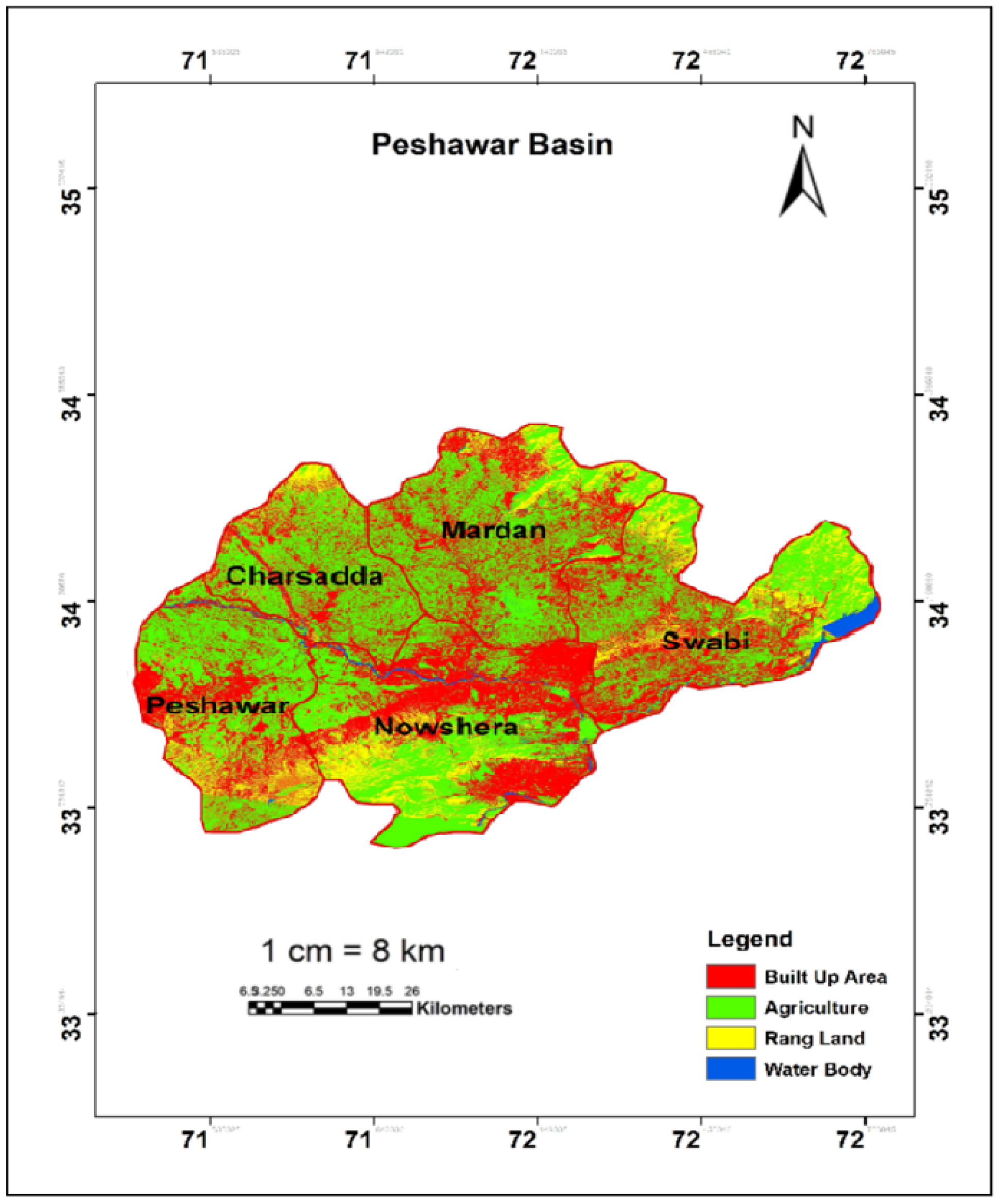
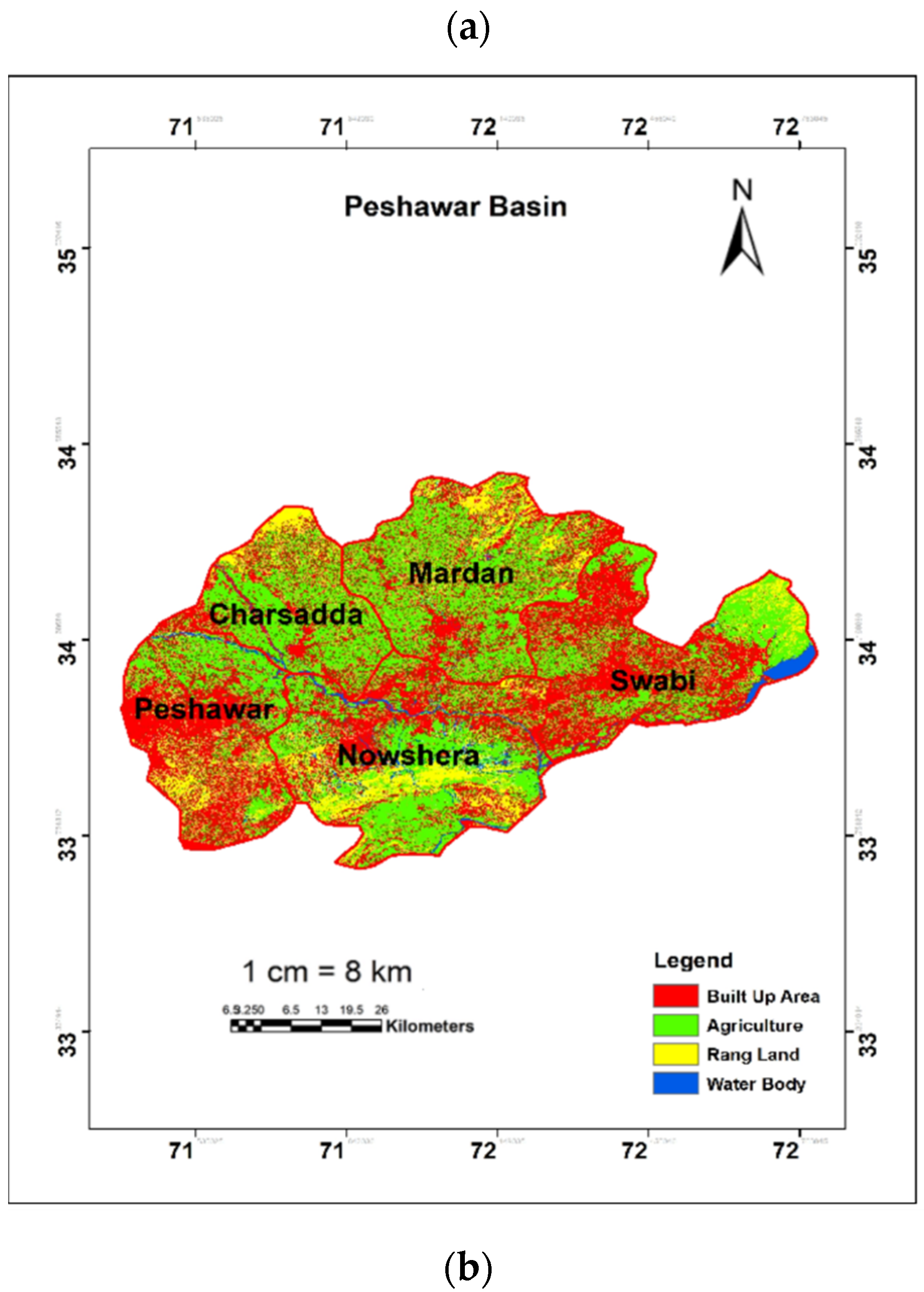
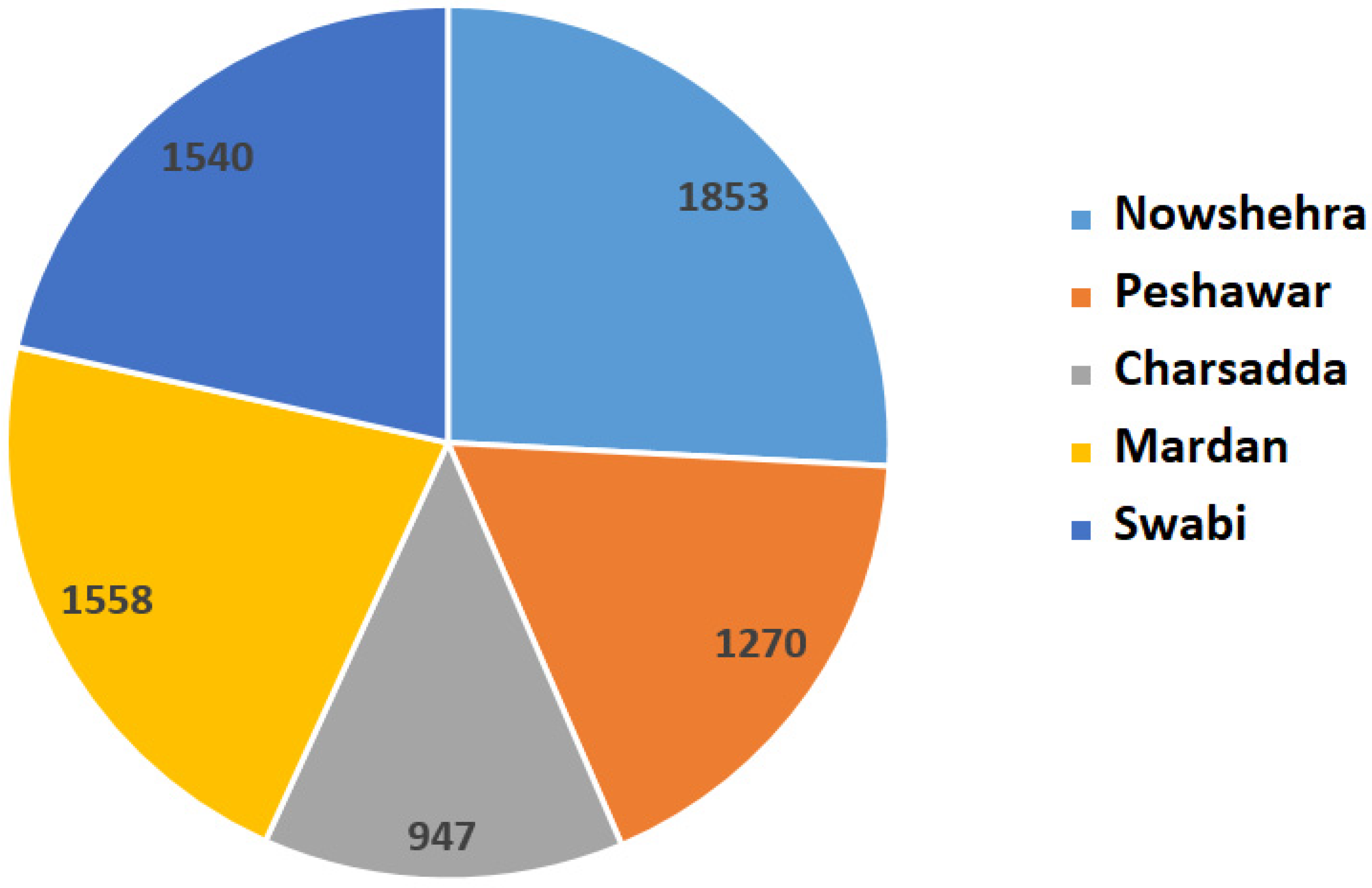
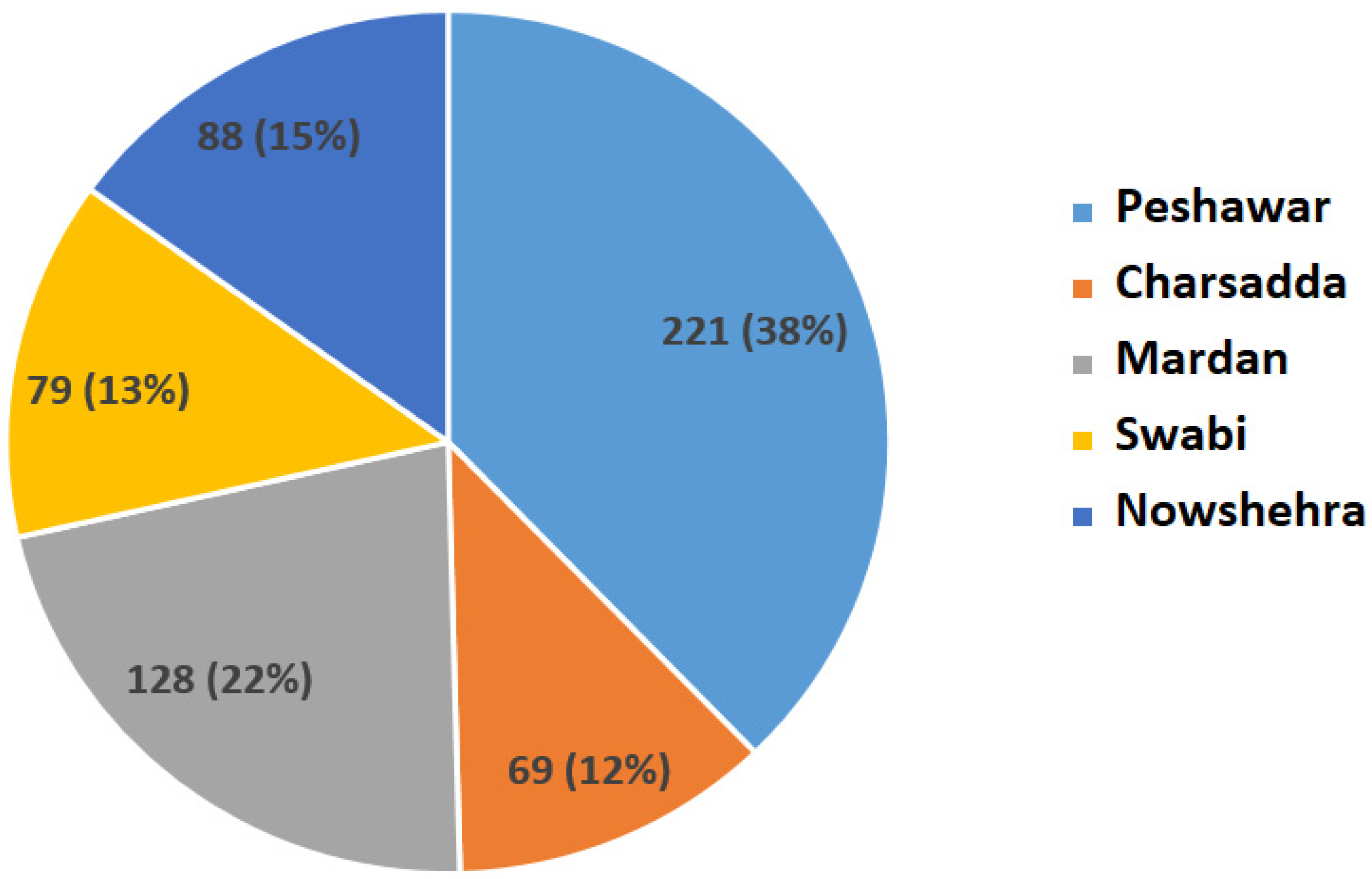
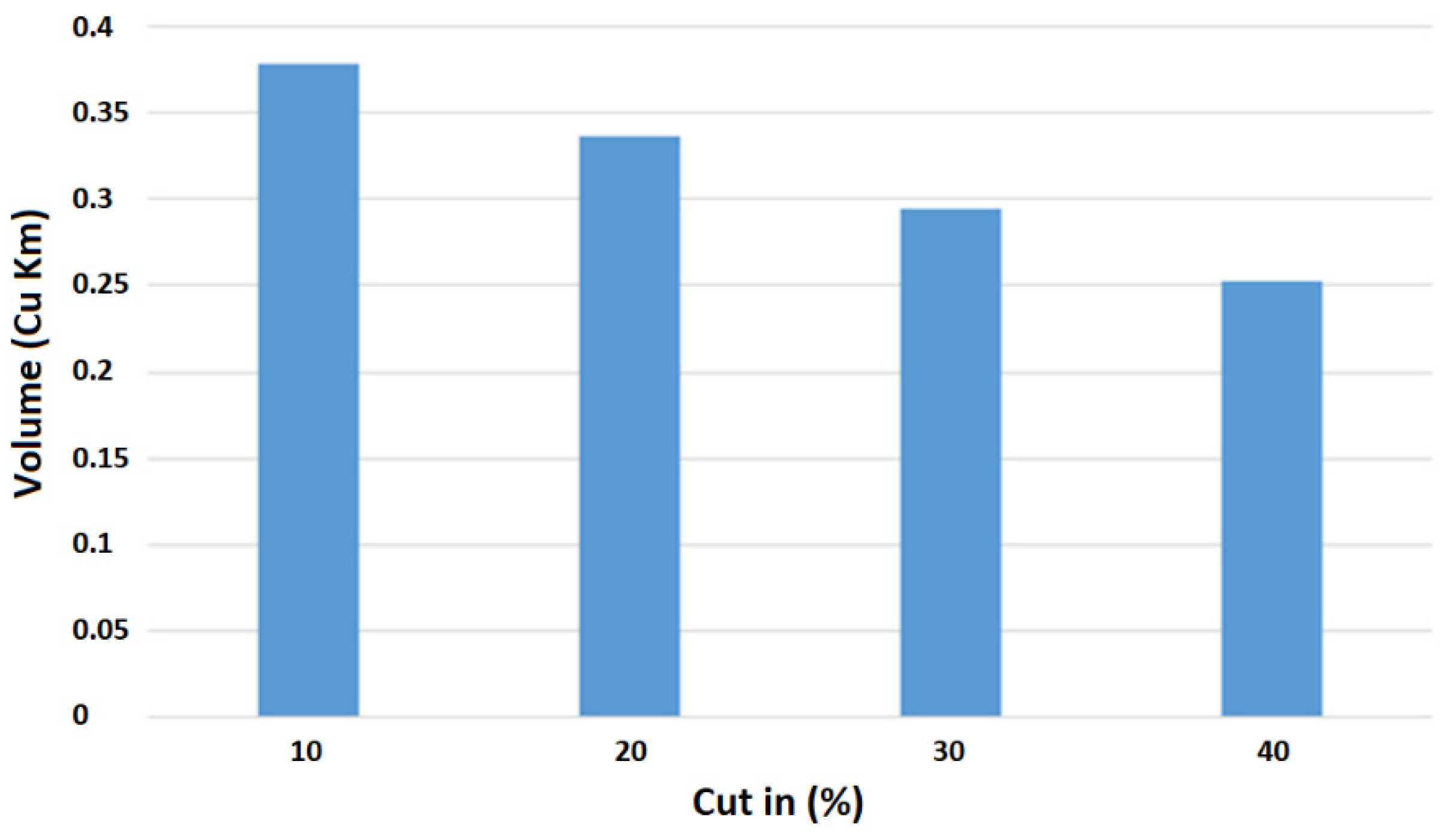
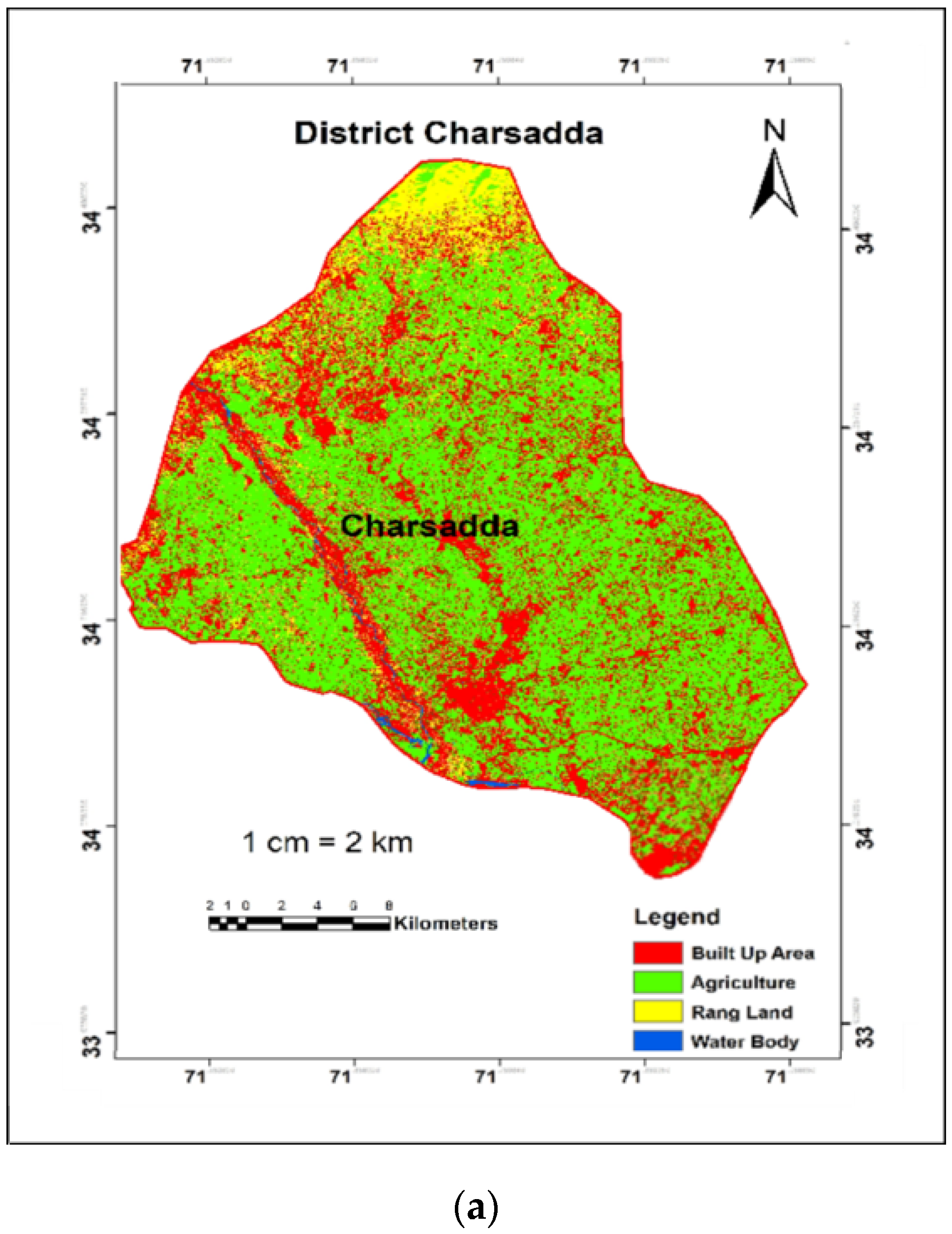
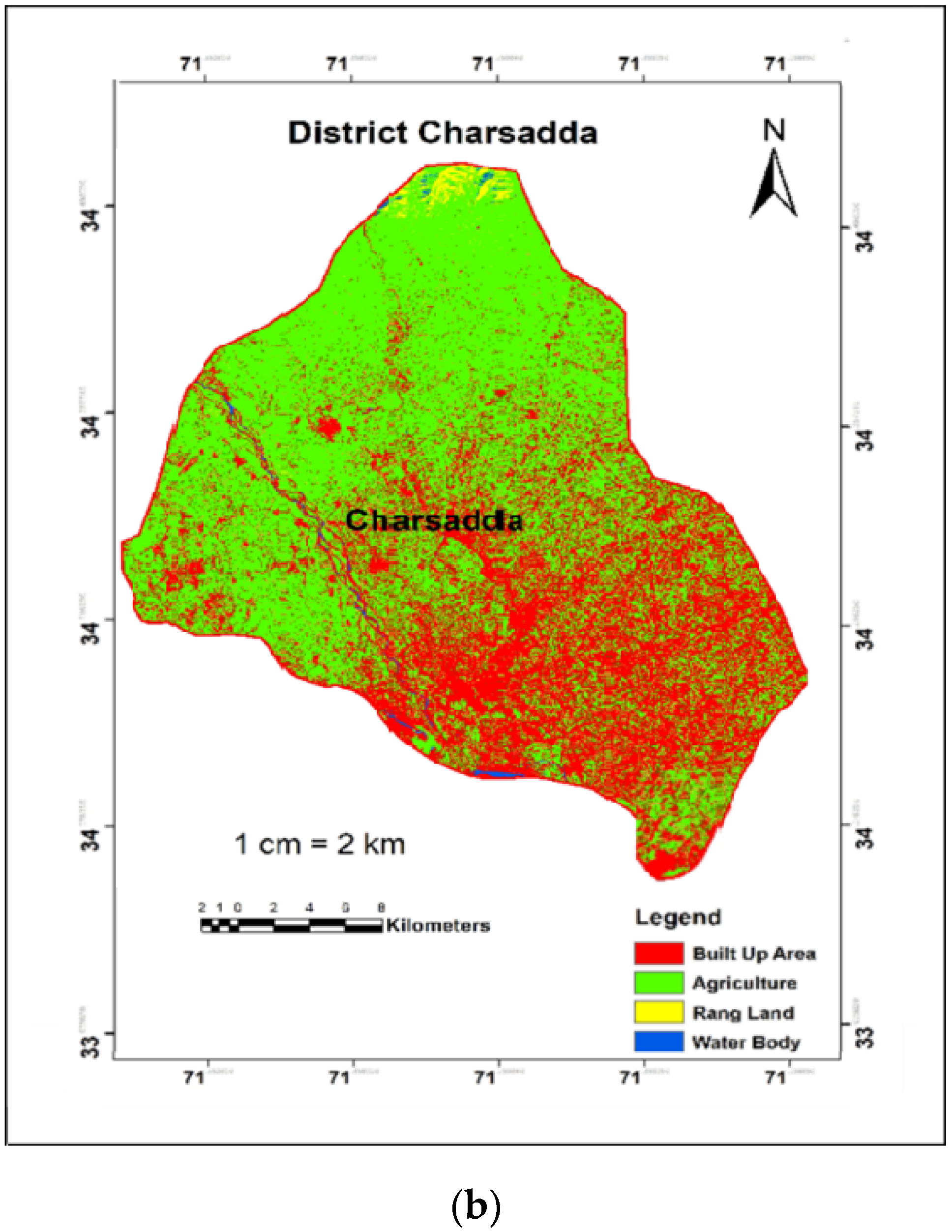
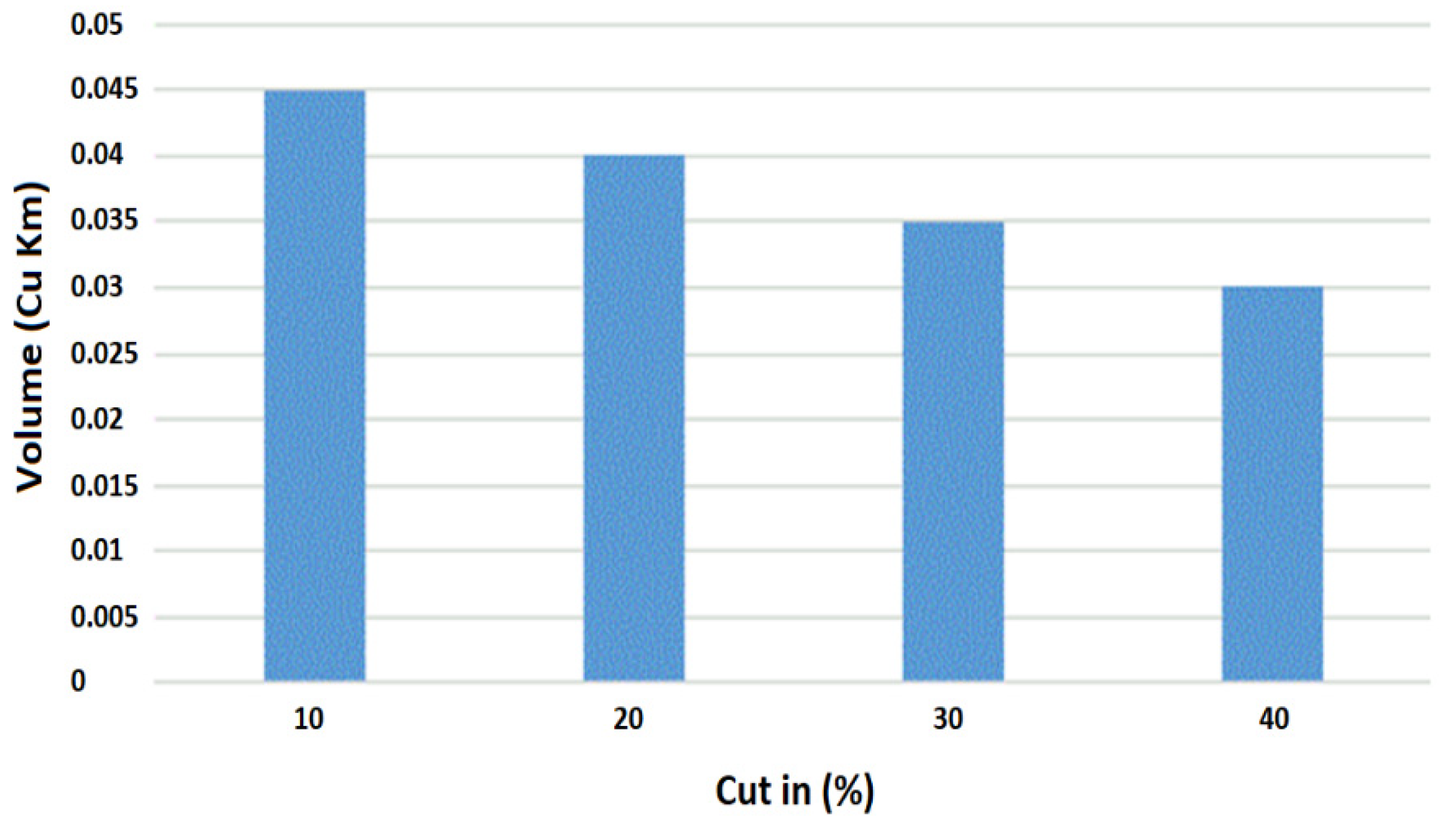
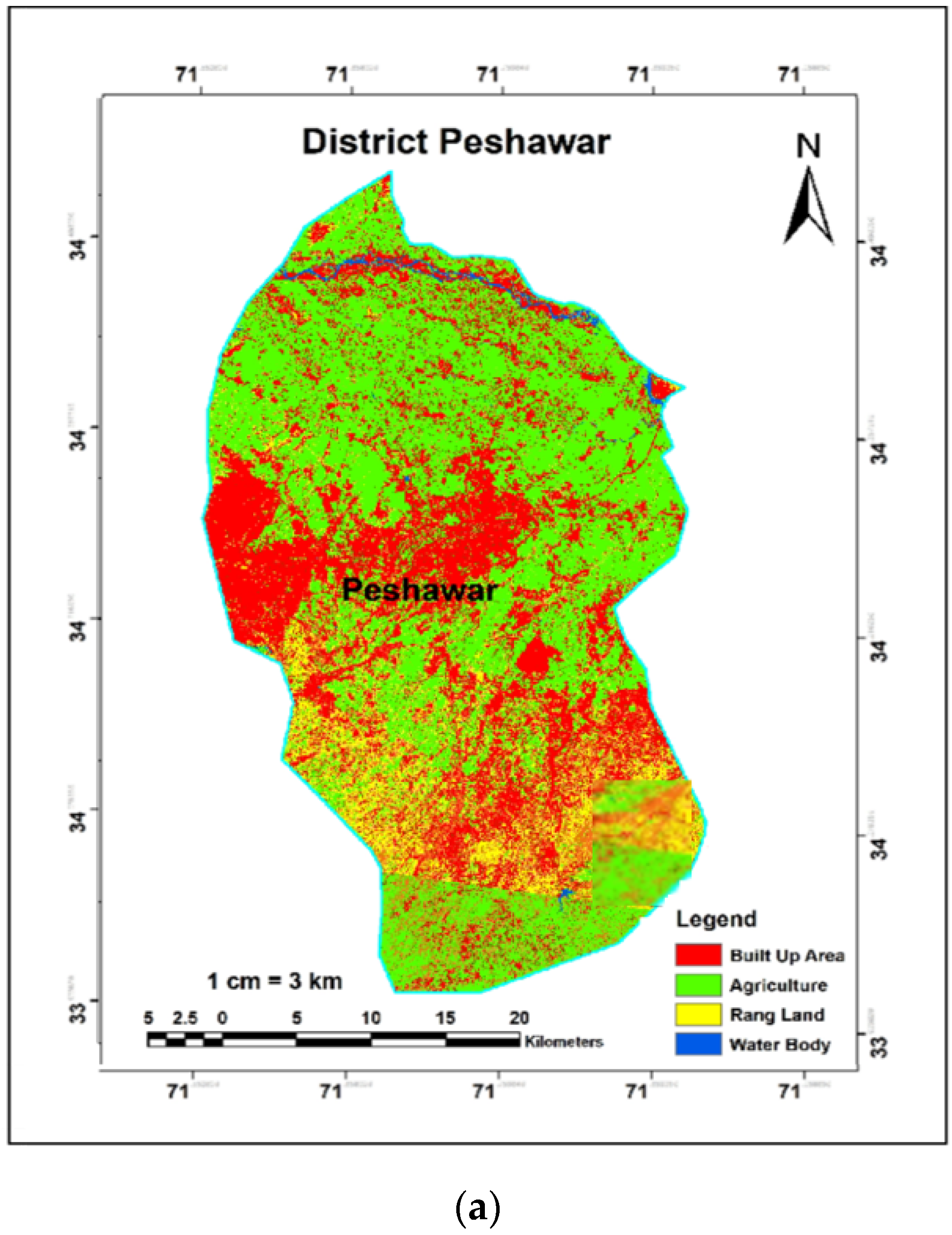
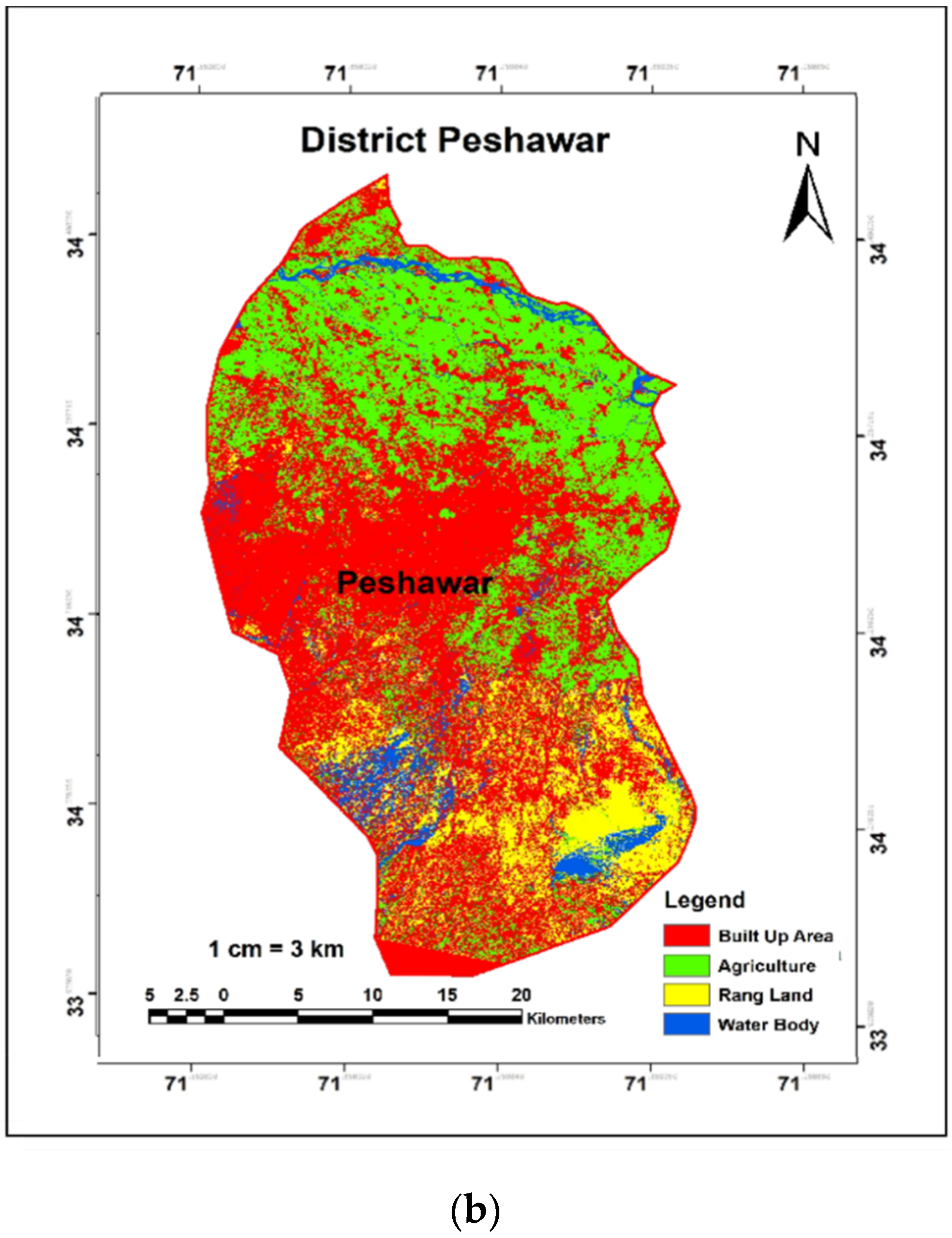

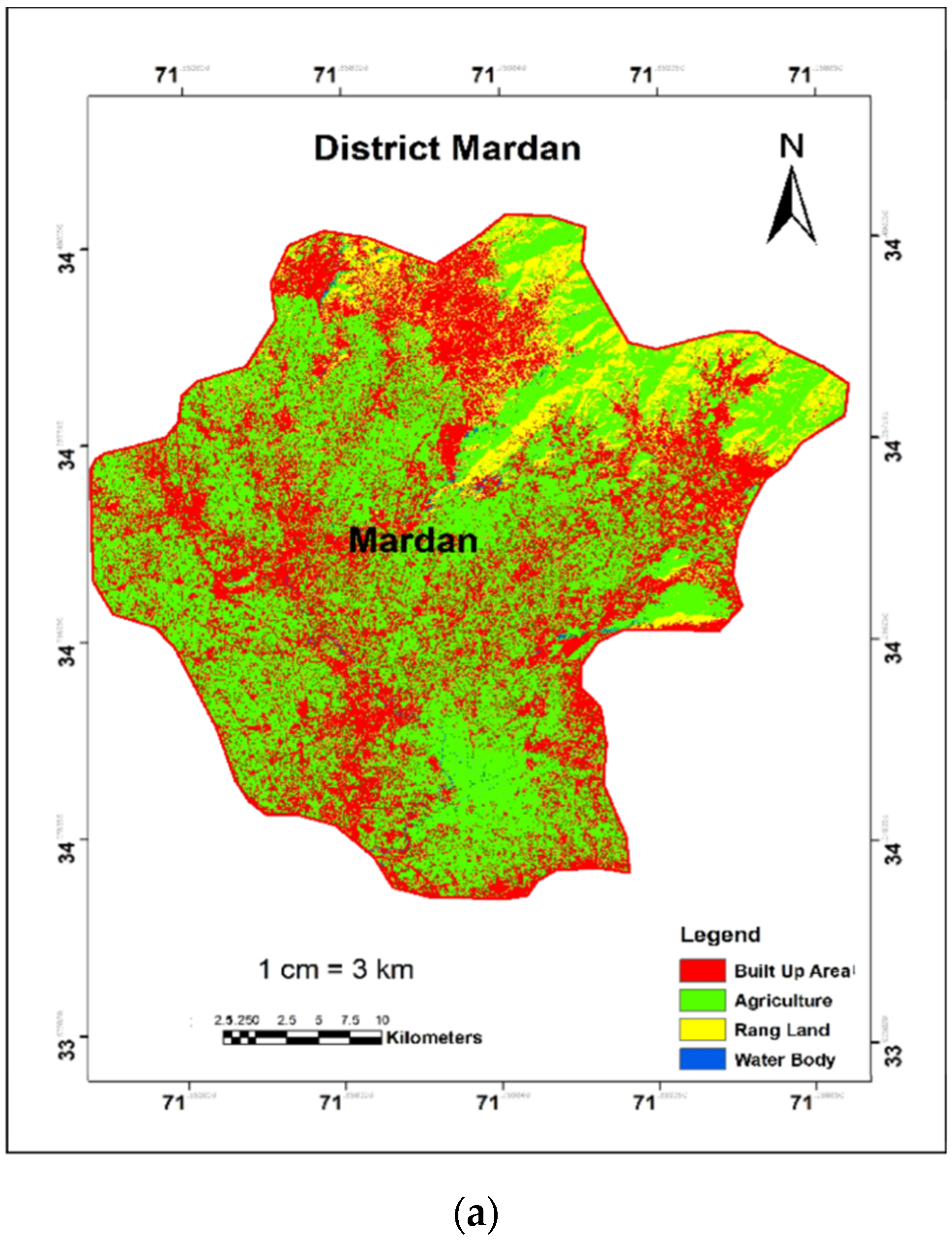
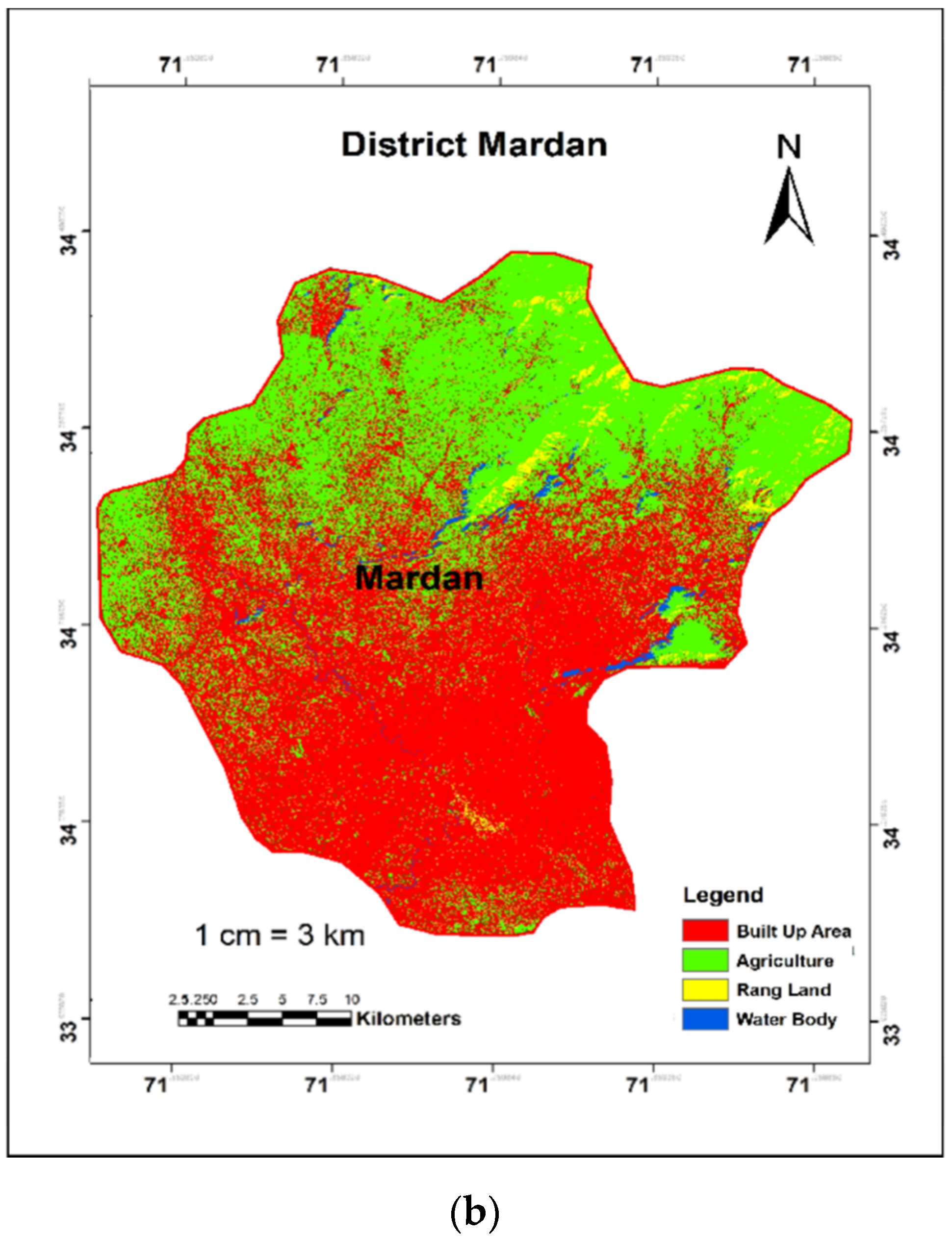
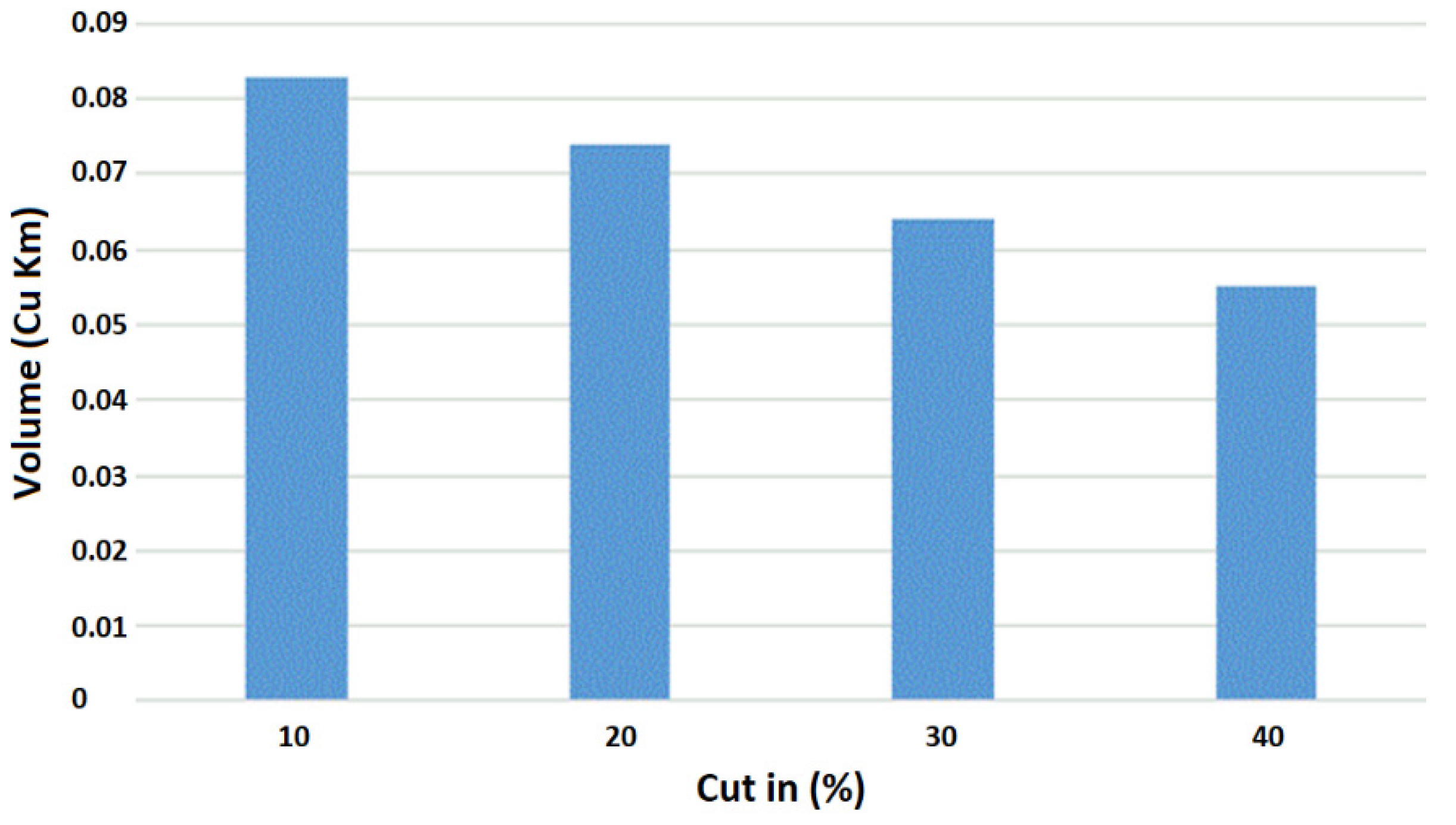
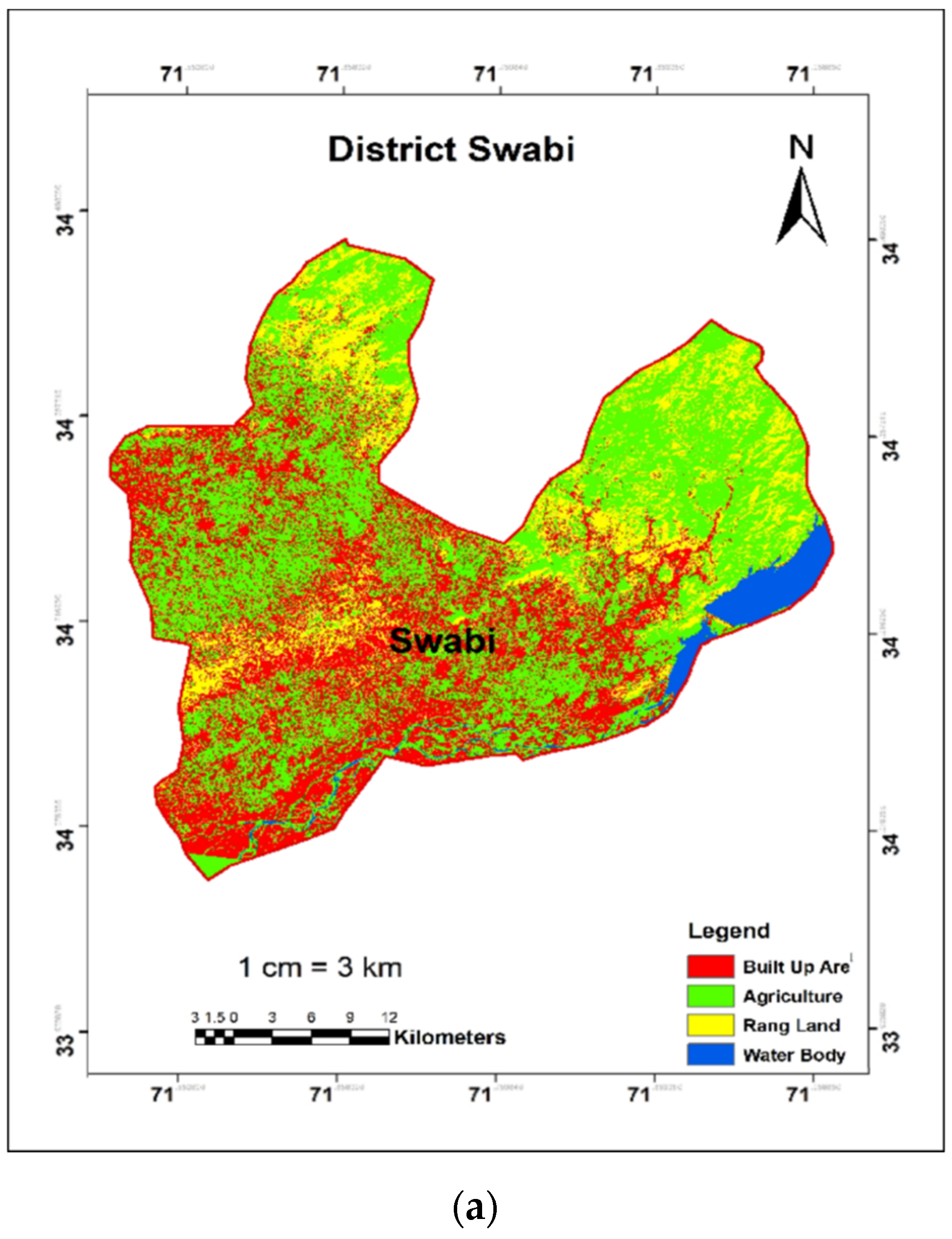
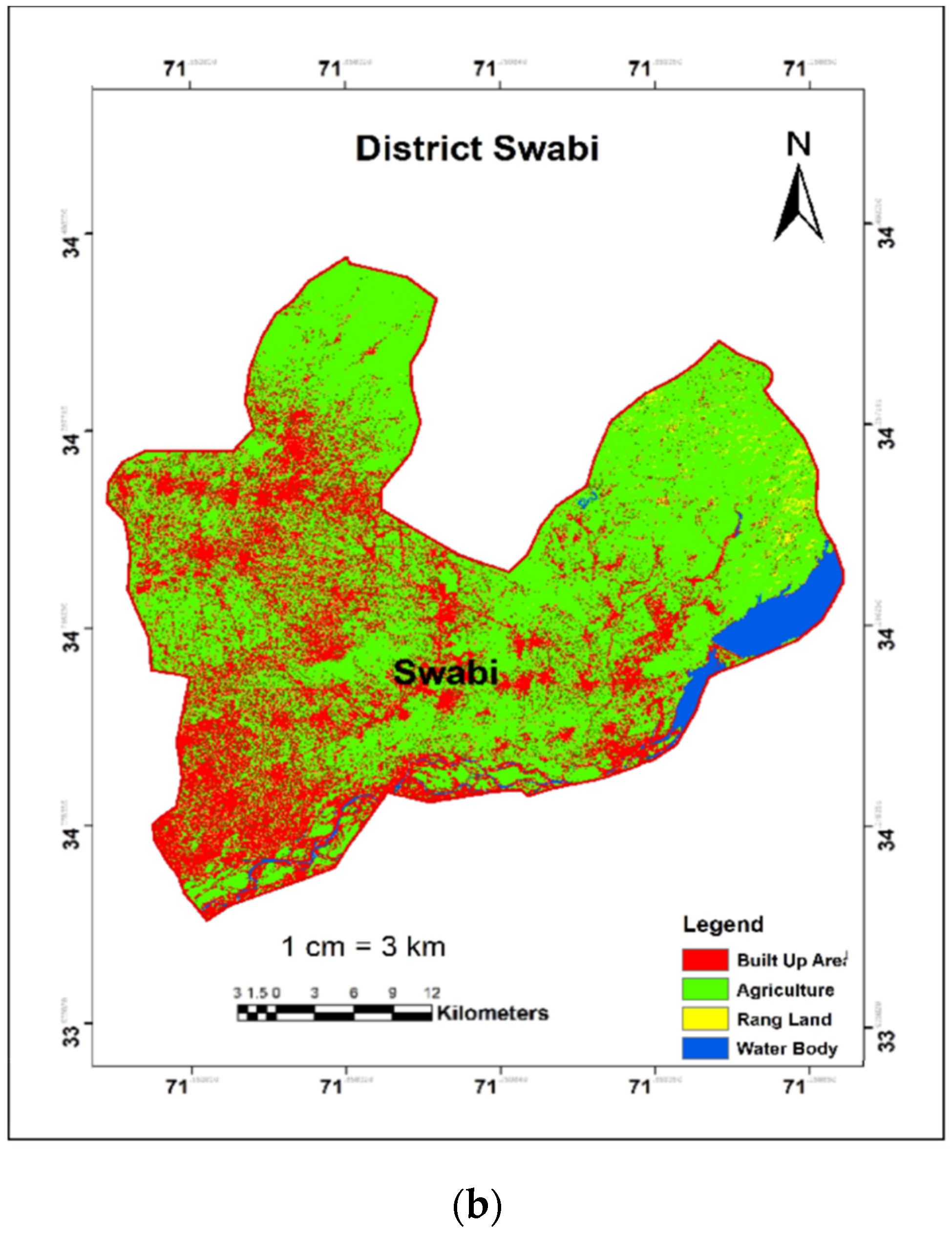
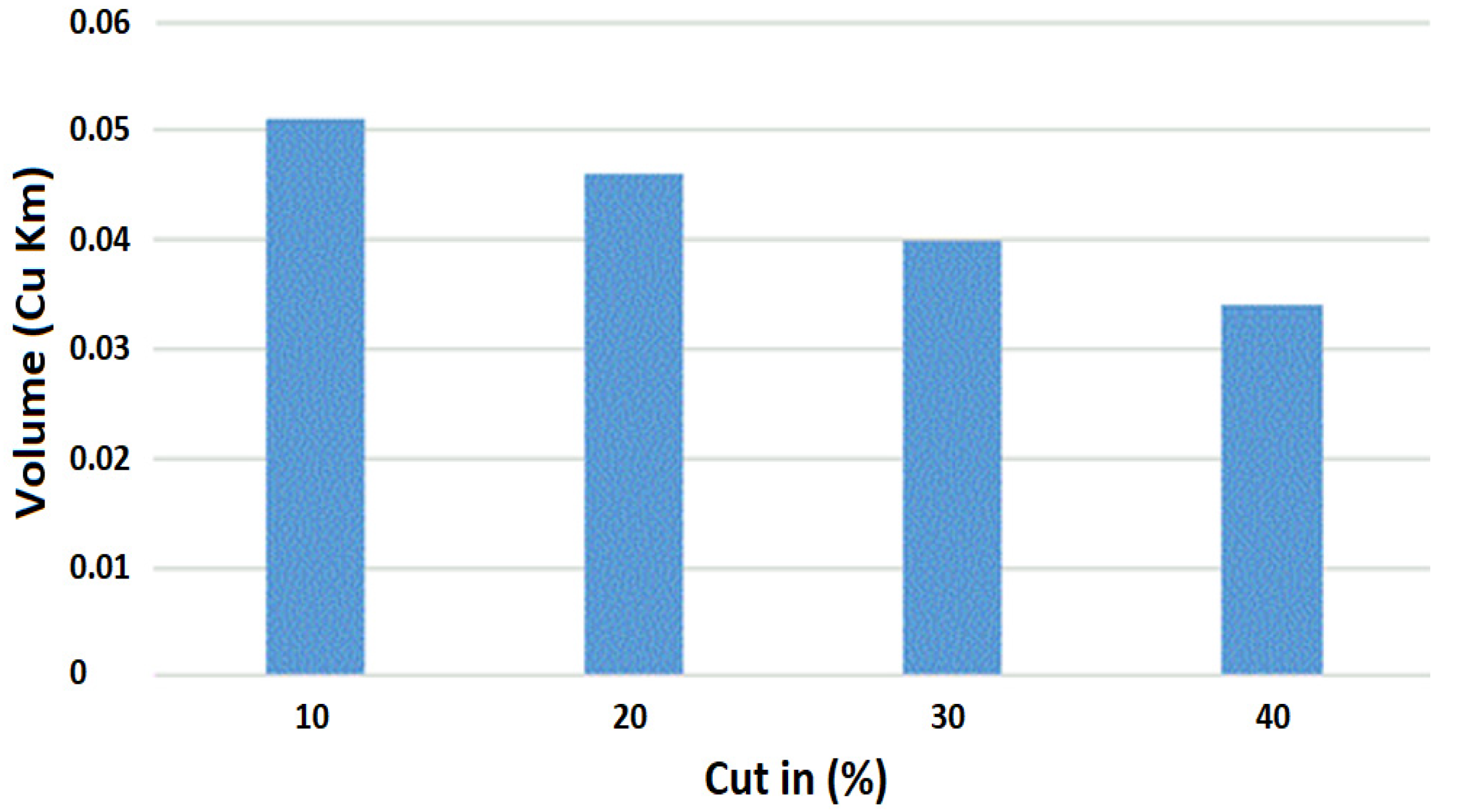
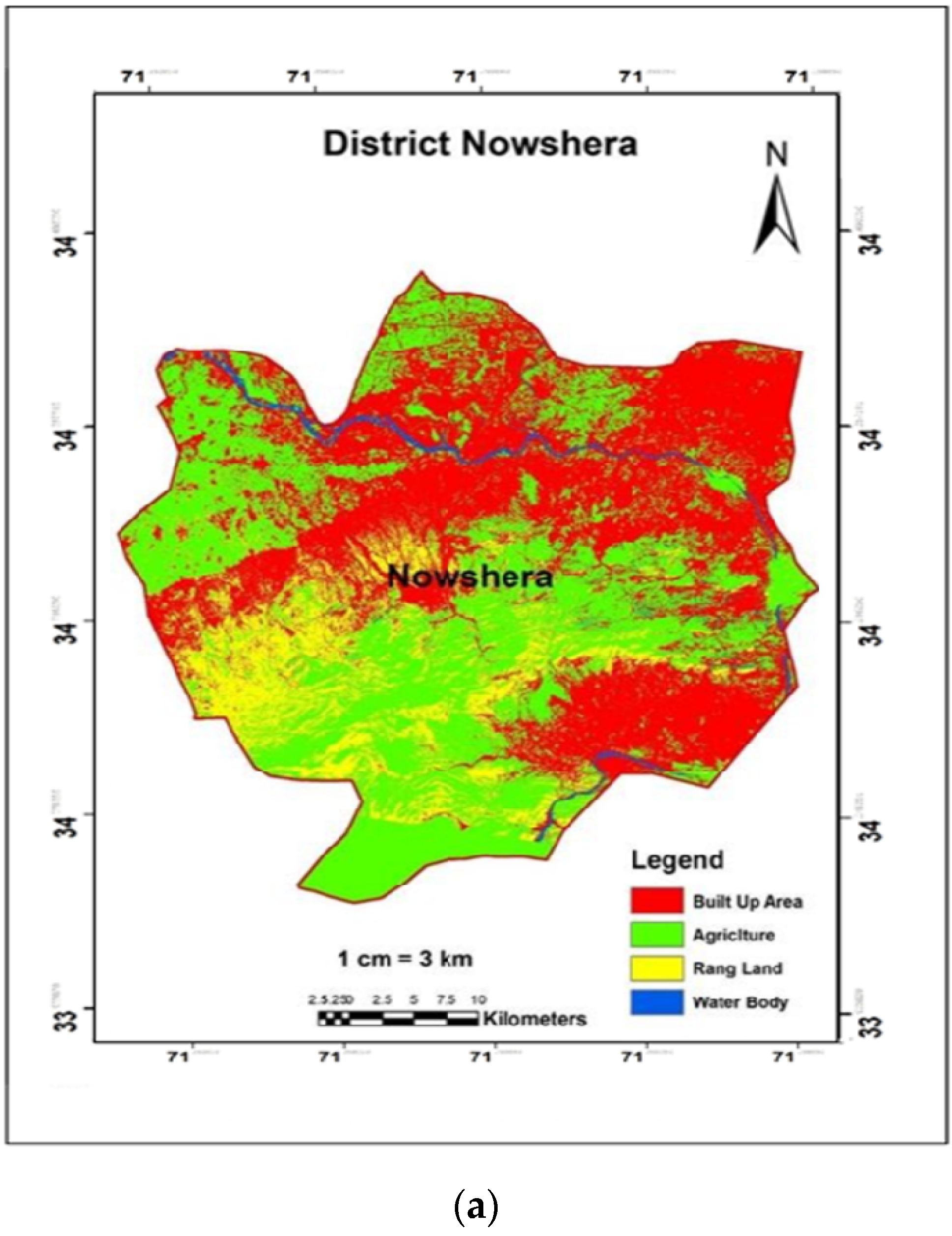
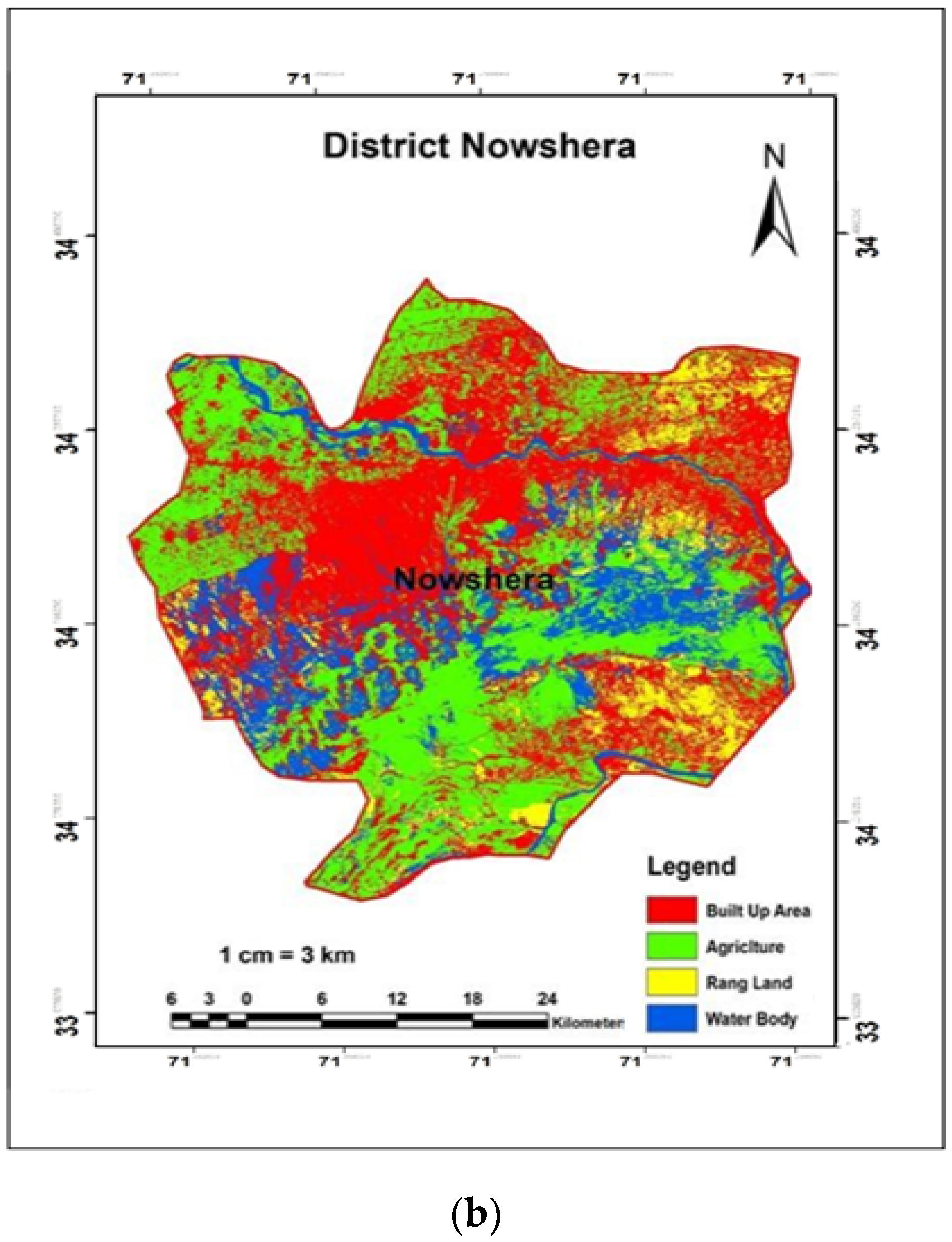
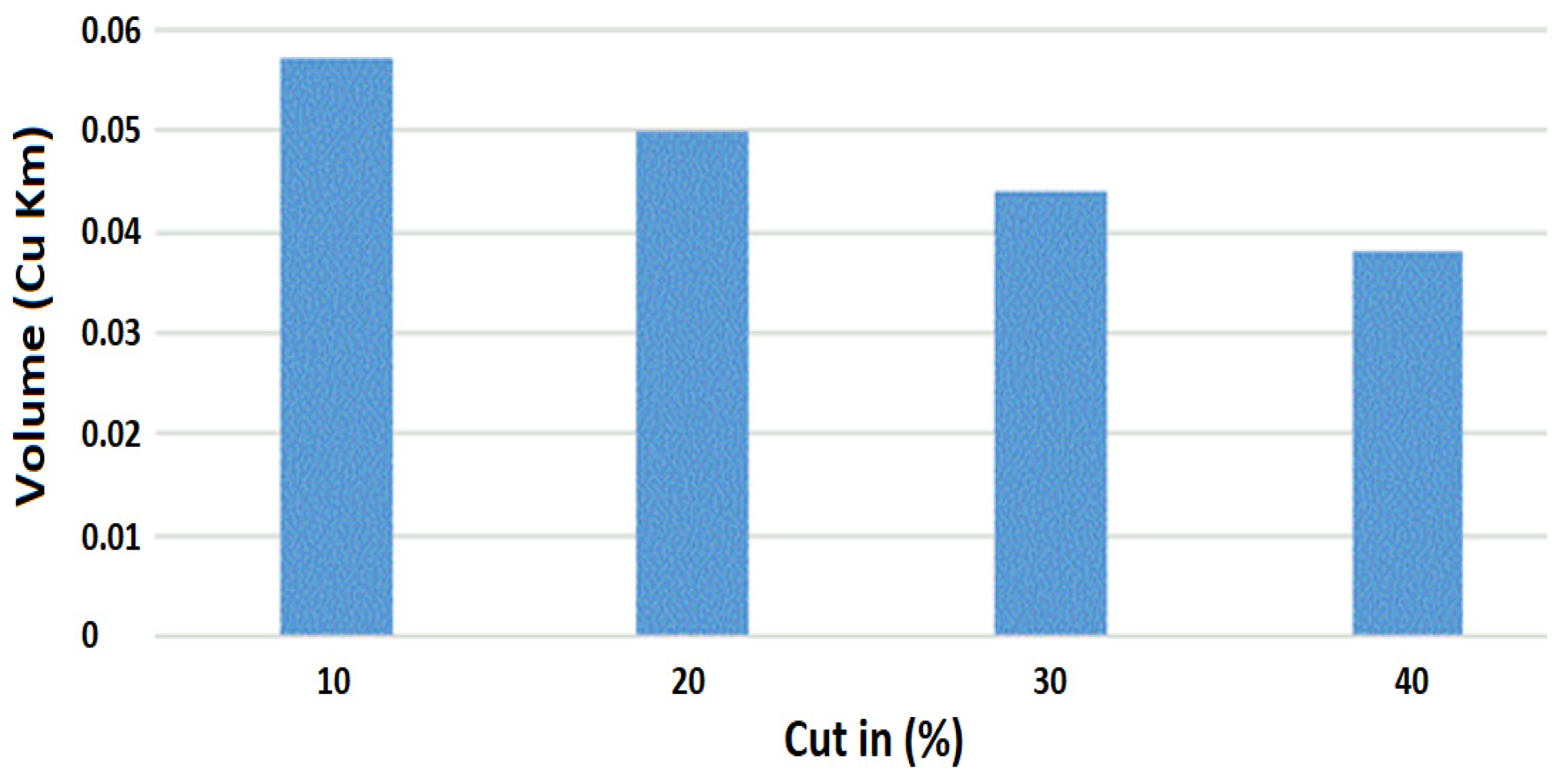
| Categories | 2010 | 2020 | Changed Area (%) | ||
|---|---|---|---|---|---|
| Area (km2) | Area (%) | Area (km2) | Area (%) | ||
| Water body | 116.494 | 1.623 | 93.576 | 1.306 | −0.317 |
| Built-up area | 2943.865 | 41.023 | 4117.805 | 57.503 | +16.480 |
| Range Land | 980.095 | 13.657 | 573.190 | 8.004 | −5.650 |
| Agricultural area | 3132.889 | 43.657 | 2376.929 | 33.193 | −10.464 |
| Categories | 2010 | 2020 | Changed Area (%) | ||
|---|---|---|---|---|---|
| Area (km2) | Area (%) | Area (km2) | Area (%) | ||
| Water body | 6.799 | 0.682 | 3.845 | 0.386 | −0.296 |
| Built-up area | 335.412 | 33.675 | 445.078 | 44.686 | +11.011 |
| Range land | 88.349 | 8.870 | 55.047 | 5.526 | −3.340 |
| Agricultural area | 566.198 | 56.847 | 492.794 | 49.472 | −7.375 |
| Categories | 2010 | 2020 | Changed Area (%) | ||
|---|---|---|---|---|---|
| Area (km2) | Area (%) | Area (km2) | Area (%) | ||
| Water body | 30.455 | 2.422 | 22.607 | 1.798 | −0.624 |
| Built-up area | 687.354 | 56.682 | 902.199 | 71.773 | +15.091 |
| Range land | 238.326 | 18.959 | 150.745 | 11.992 | −6.967 |
| Agricultural area | 301.133 | 32.956 | 181.318 | 14.424 | −18.532 |
| Categories | 2010 | 2020 | Changed Area (%) | ||
|---|---|---|---|---|---|
| Area (km2) | Area (%) | Area (km2) | Area (%) | ||
| Water body | 5.514 | 1.337 | 3.576 | 1.219 | −0.118 |
| Built-up area | 660.185 | 40.452 | 863.320 | 52.899 | +12.447 |
| Range land | 143.229 | 8.776 | 93.570 | 7.733 | −1.043 |
| Agricultural area | 823.500 | 50.459 | 673.008 | 41.238 | −9.221 |
| Categories | 2010 | 2020 | Changed Area (%) | ||
|---|---|---|---|---|---|
| Area (km2) | Area (%) | Area (km2) | Area (%) | ||
| Water body | 48.278 | 3.128 | 44.345 | 2.873 | −0.255 |
| Built-up area | 516.799 | 33.493 | 993.604 | 64.381 | +30.888 |
| Range land | 242.648 | 15.725 | 108.057 | 7.003 | −8.722 |
| Agricultural area | 730.271 | 47.327 | 398.967 | 25.856 | −21.471 |
| Categories | 2010 | 2020 | Changed Area (%) | ||
|---|---|---|---|---|---|
| Area (km2) | Area (%) | Area (km2) | Area (%) | ||
| Water body | 25.448 | 1.455 | 19.203 | 1.104 | −0.351 |
| Built-up area | 744.115 | 42.569 | 931.604 | 53.295 | +10.726 |
| Range land | 267.543 | 15.305 | 165.348 | 9.459 | −5.846 |
| Agricultural area | 712.287 | 40.748 | 631.205 | 36.110 | −4.638 |
Publisher’s Note: MDPI stays neutral with regard to jurisdictional claims in published maps and institutional affiliations. |
© 2022 by the authors. Licensee MDPI, Basel, Switzerland. This article is an open access article distributed under the terms and conditions of the Creative Commons Attribution (CC BY) license (https://creativecommons.org/licenses/by/4.0/).
Share and Cite
Ahmad, N.; Khan, S.; Ehsan, M.; Rehman, F.U.; Al-Shuhail, A. Estimating the Total Volume of Running Water Bodies Using Geographic Information System (GIS): A Case Study of Peshawar Basin (Pakistan). Sustainability 2022, 14, 3754. https://doi.org/10.3390/su14073754
Ahmad N, Khan S, Ehsan M, Rehman FU, Al-Shuhail A. Estimating the Total Volume of Running Water Bodies Using Geographic Information System (GIS): A Case Study of Peshawar Basin (Pakistan). Sustainability. 2022; 14(7):3754. https://doi.org/10.3390/su14073754
Chicago/Turabian StyleAhmad, Naveed, Sikandar Khan, Muhsan Ehsan, Fayaz Ur Rehman, and Abdullatif Al-Shuhail. 2022. "Estimating the Total Volume of Running Water Bodies Using Geographic Information System (GIS): A Case Study of Peshawar Basin (Pakistan)" Sustainability 14, no. 7: 3754. https://doi.org/10.3390/su14073754
APA StyleAhmad, N., Khan, S., Ehsan, M., Rehman, F. U., & Al-Shuhail, A. (2022). Estimating the Total Volume of Running Water Bodies Using Geographic Information System (GIS): A Case Study of Peshawar Basin (Pakistan). Sustainability, 14(7), 3754. https://doi.org/10.3390/su14073754








